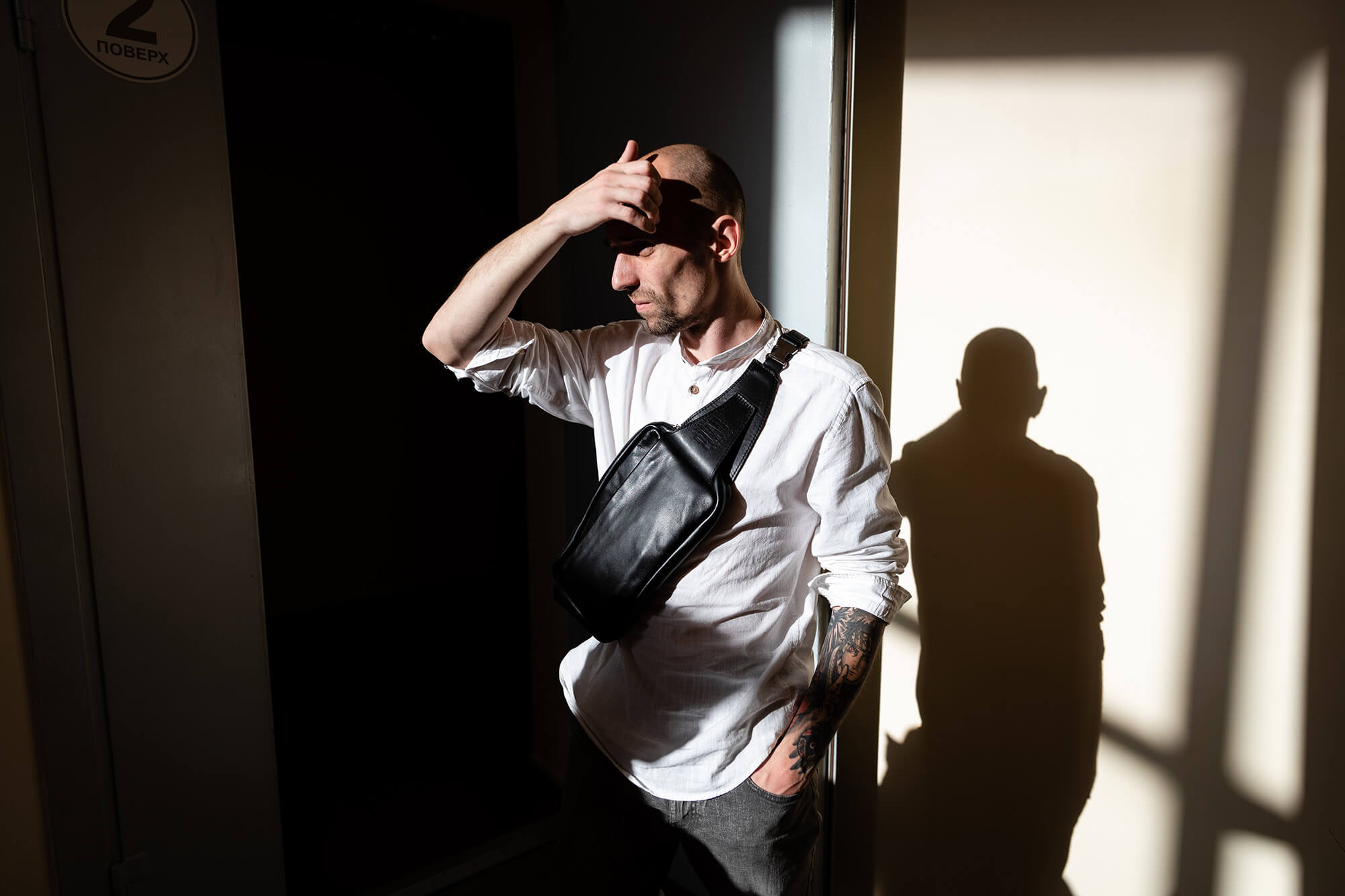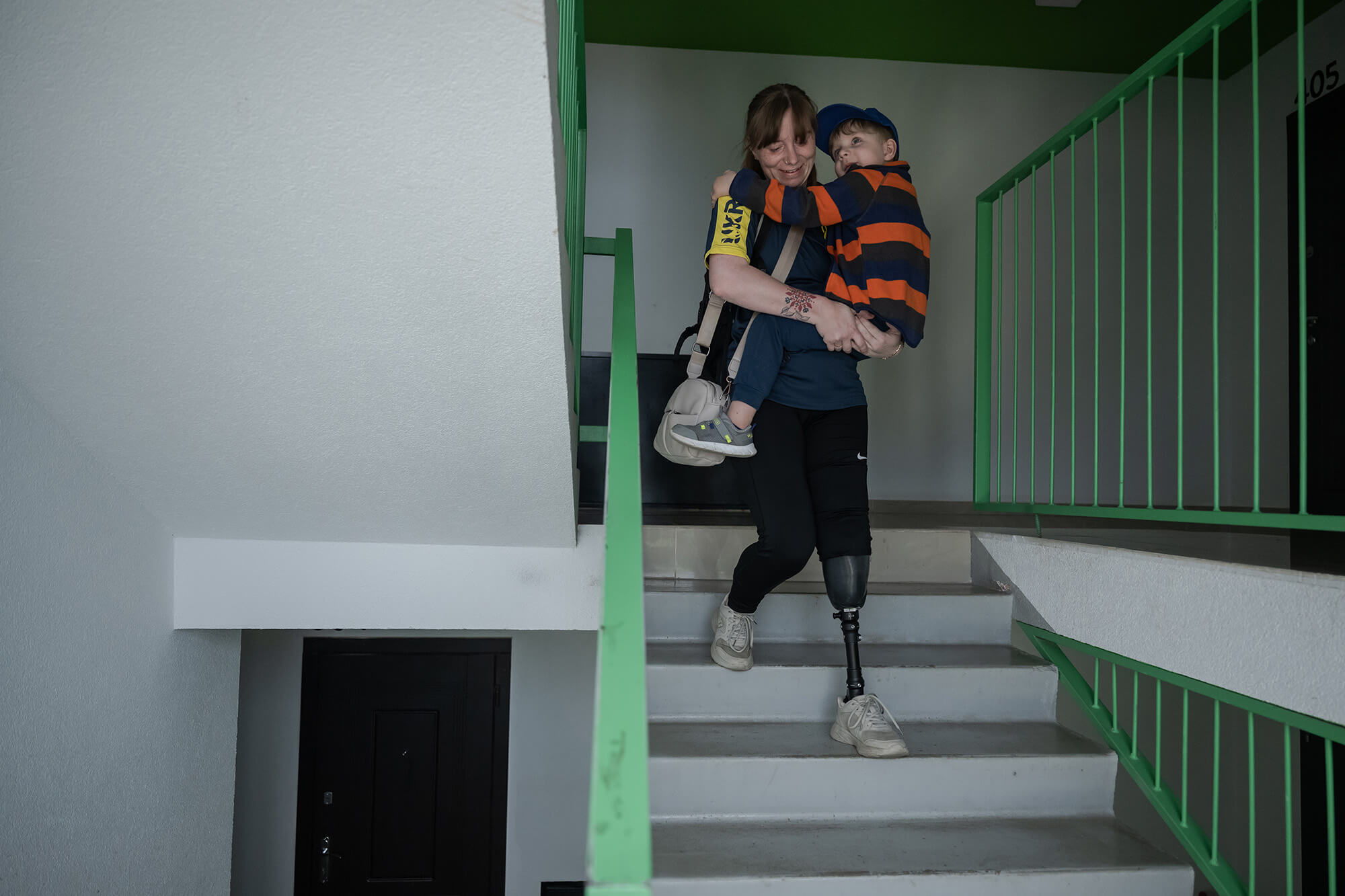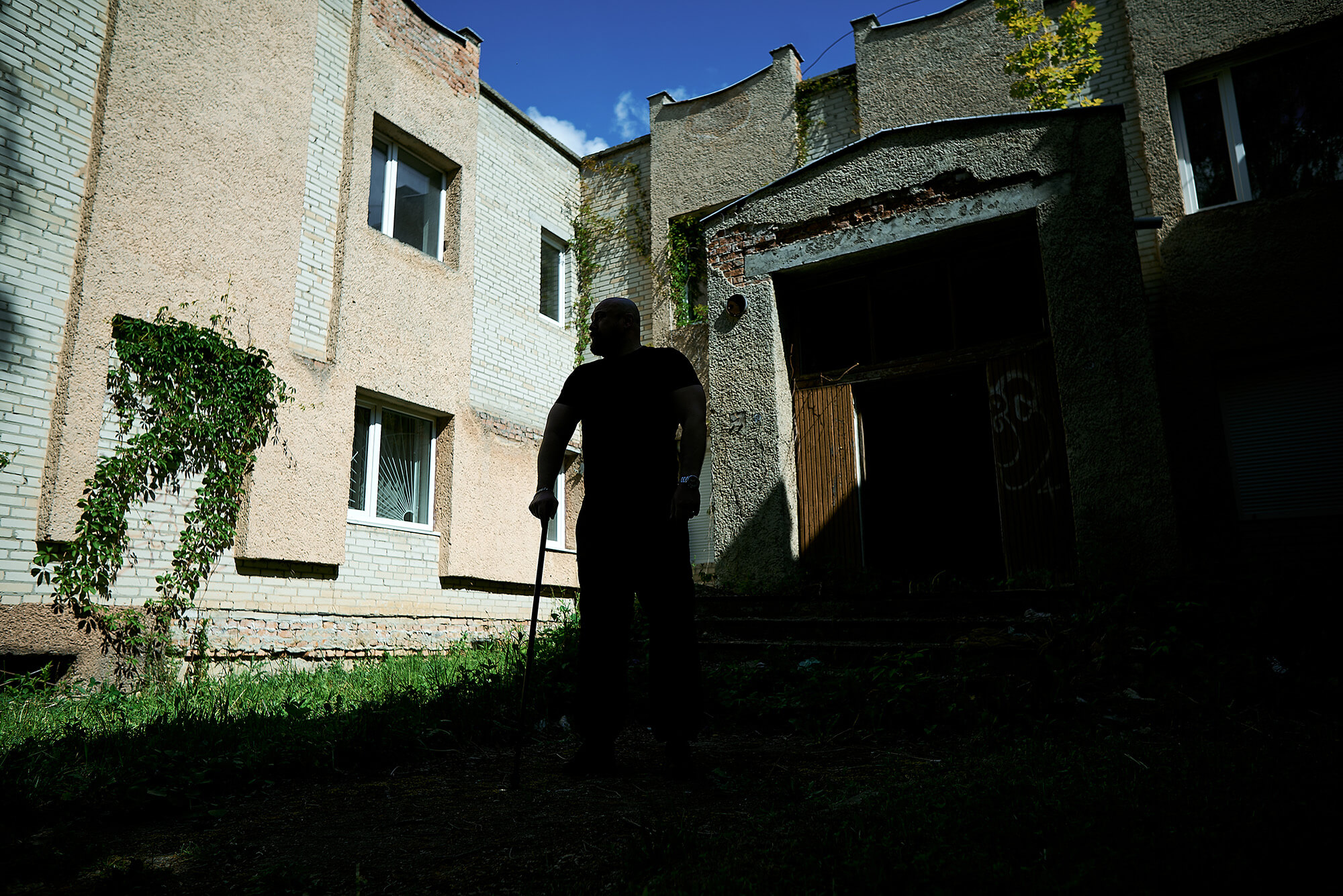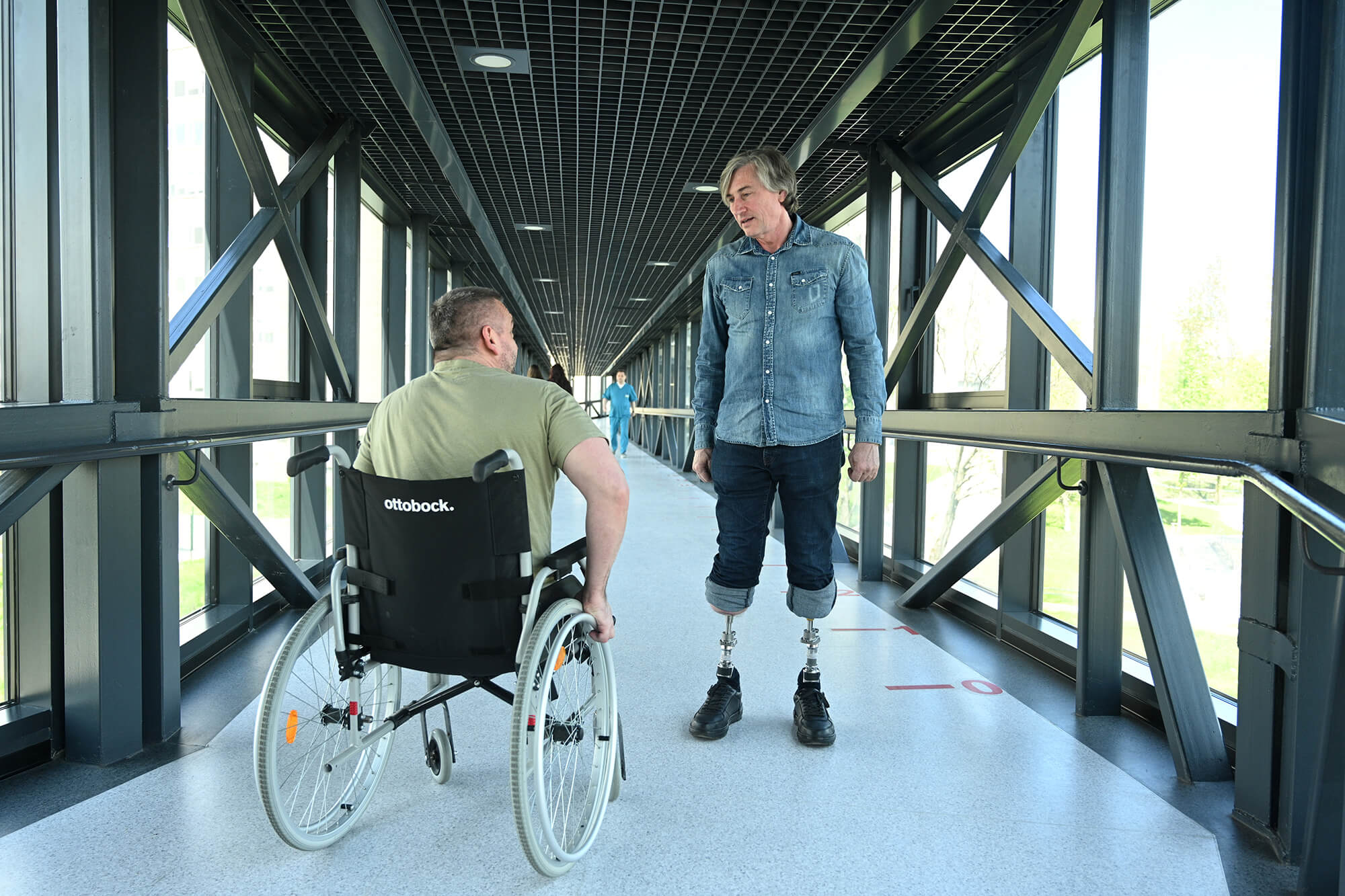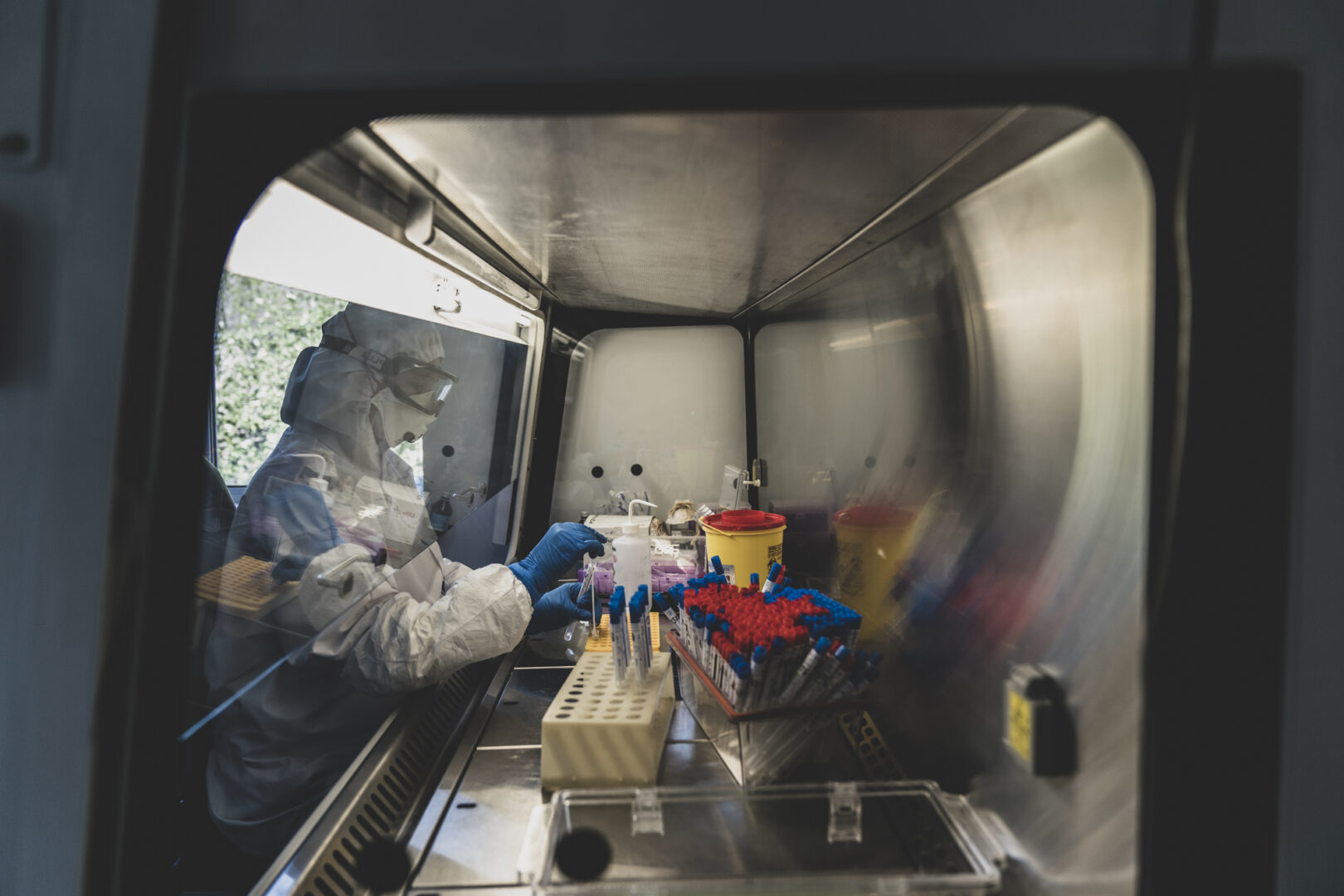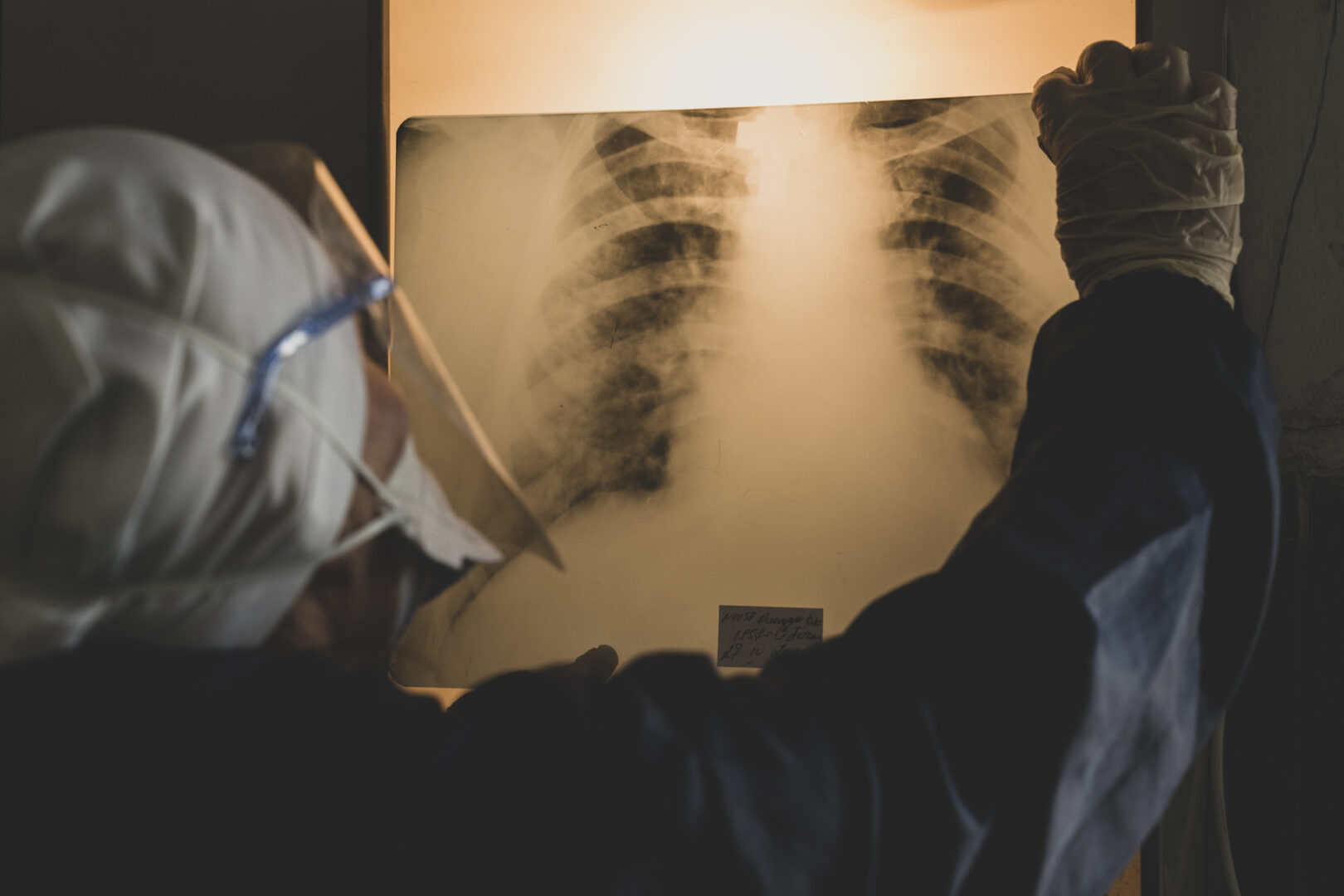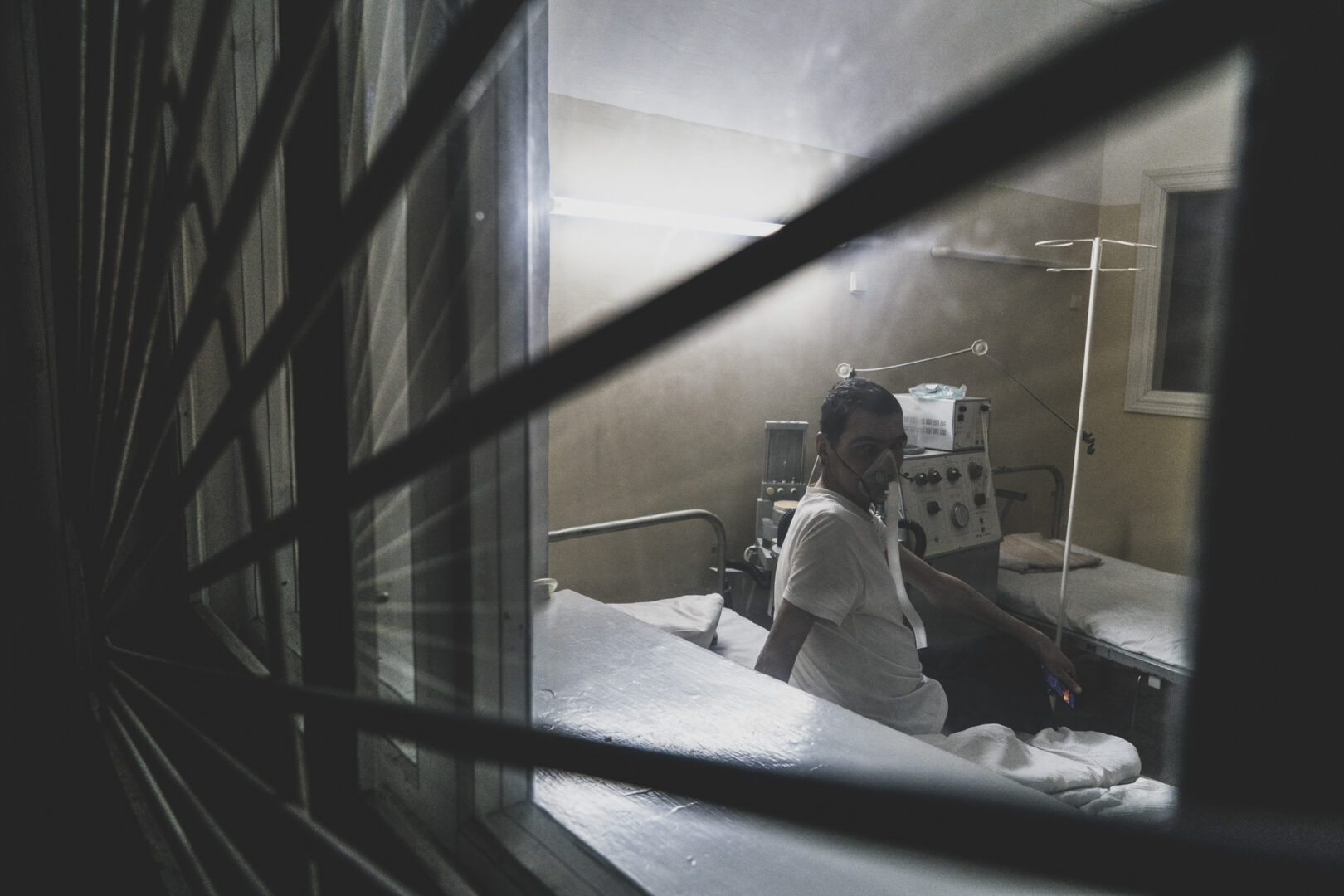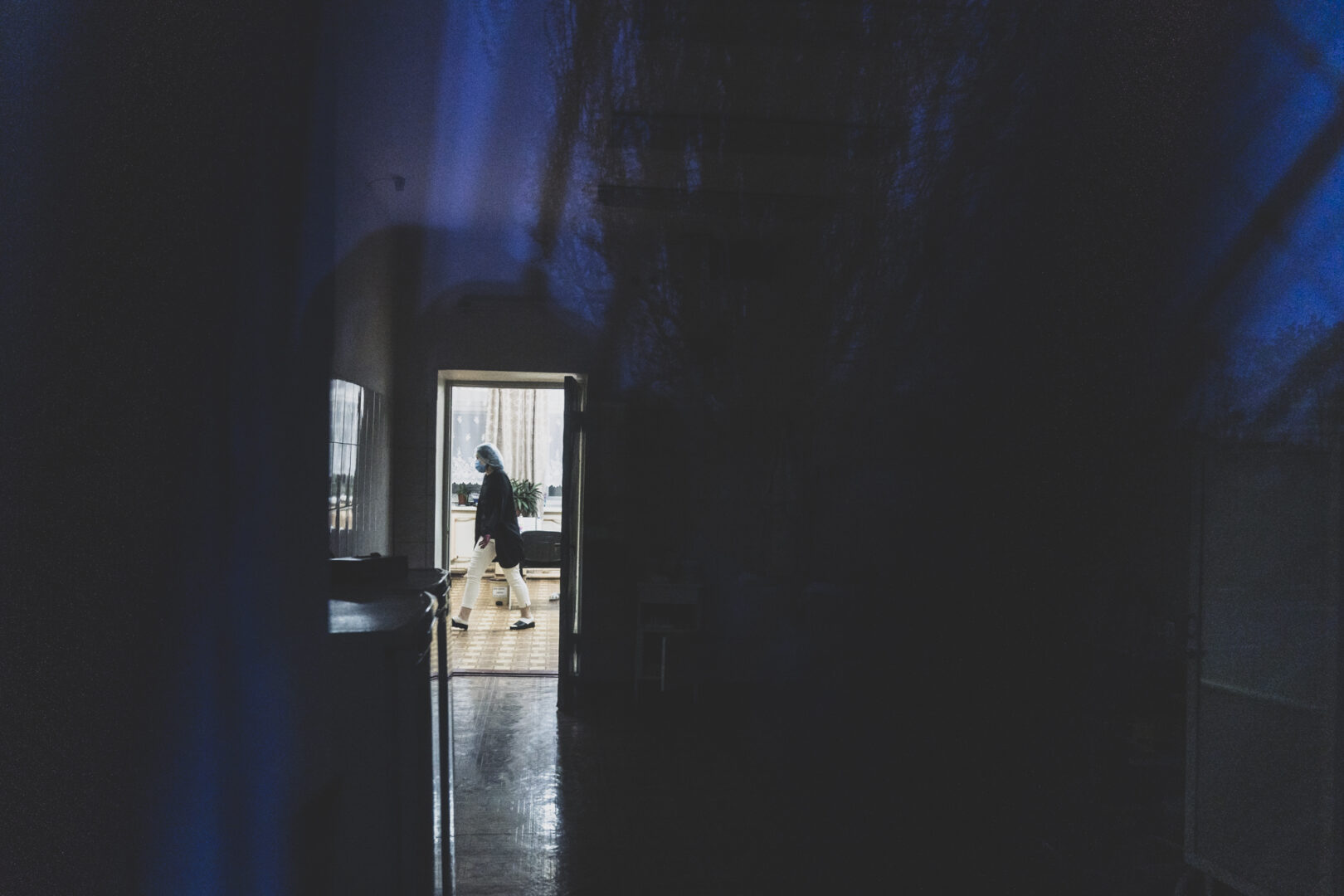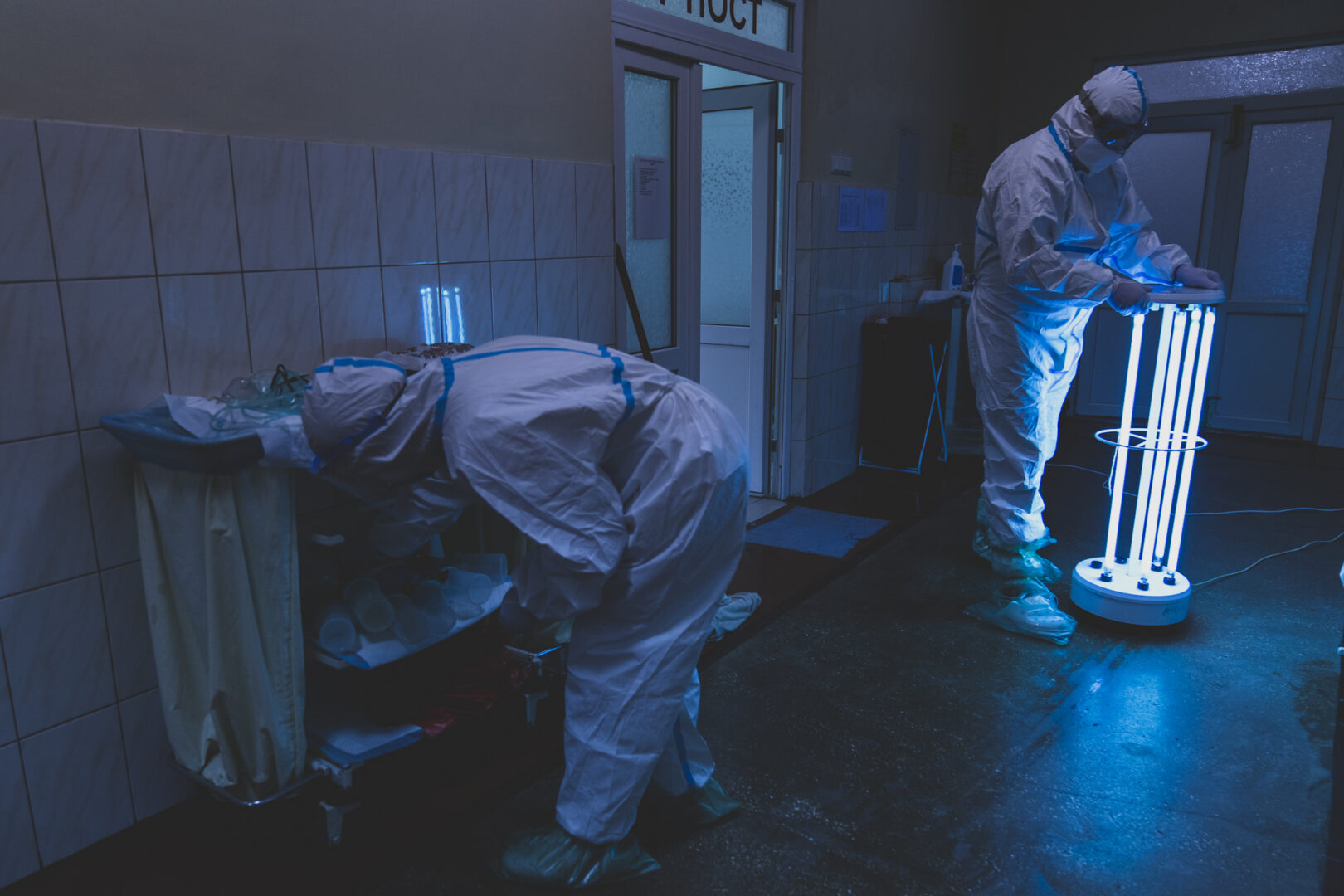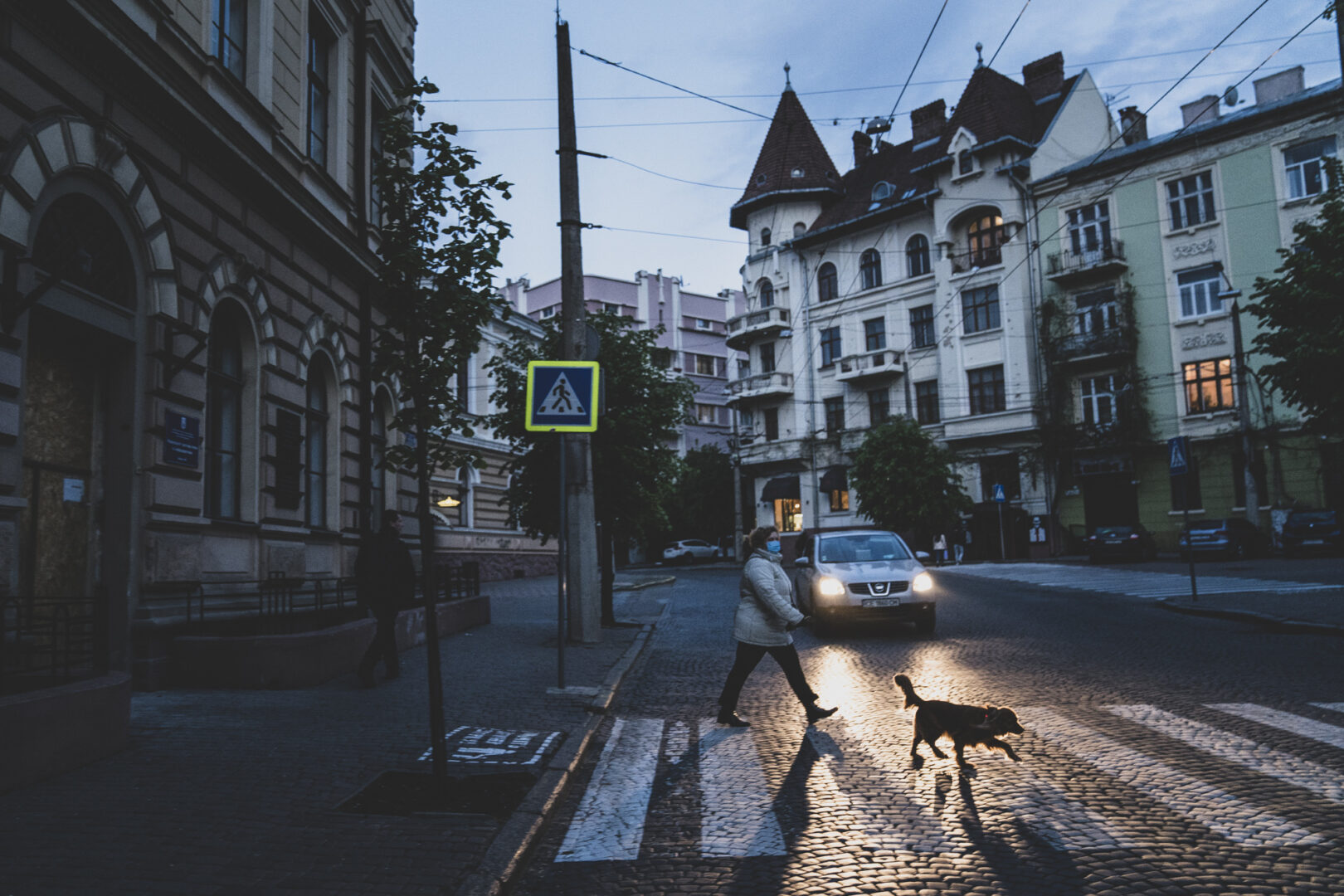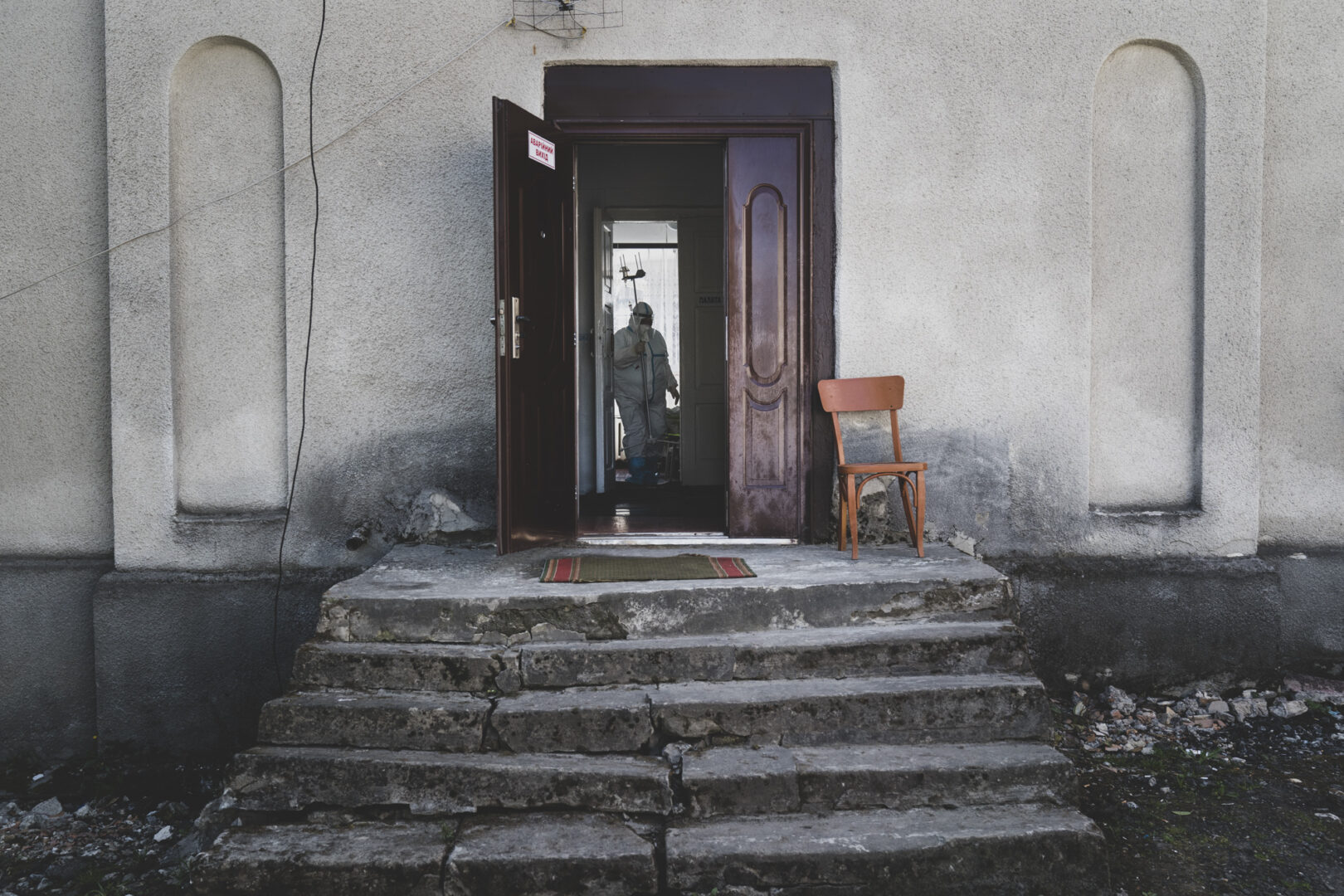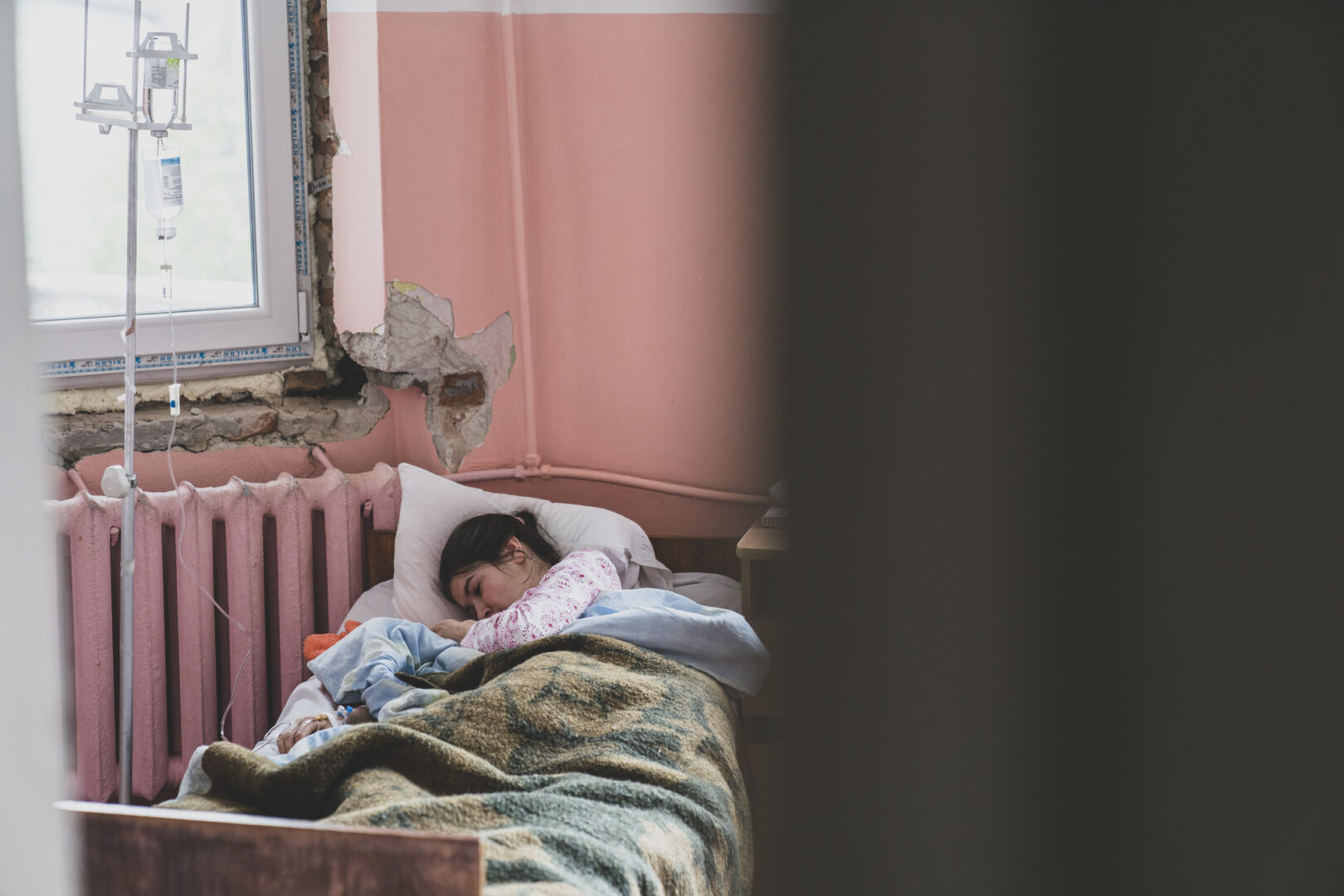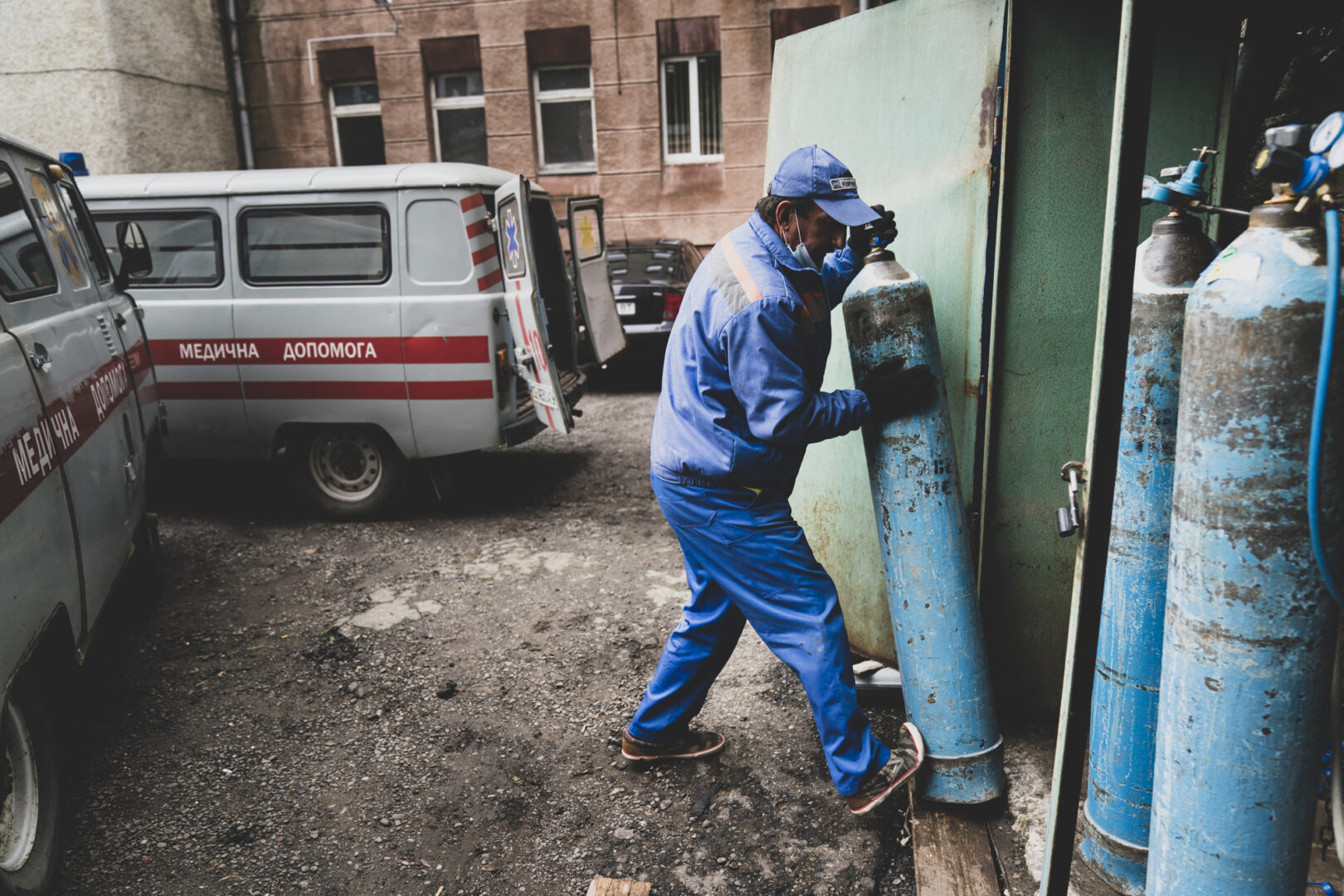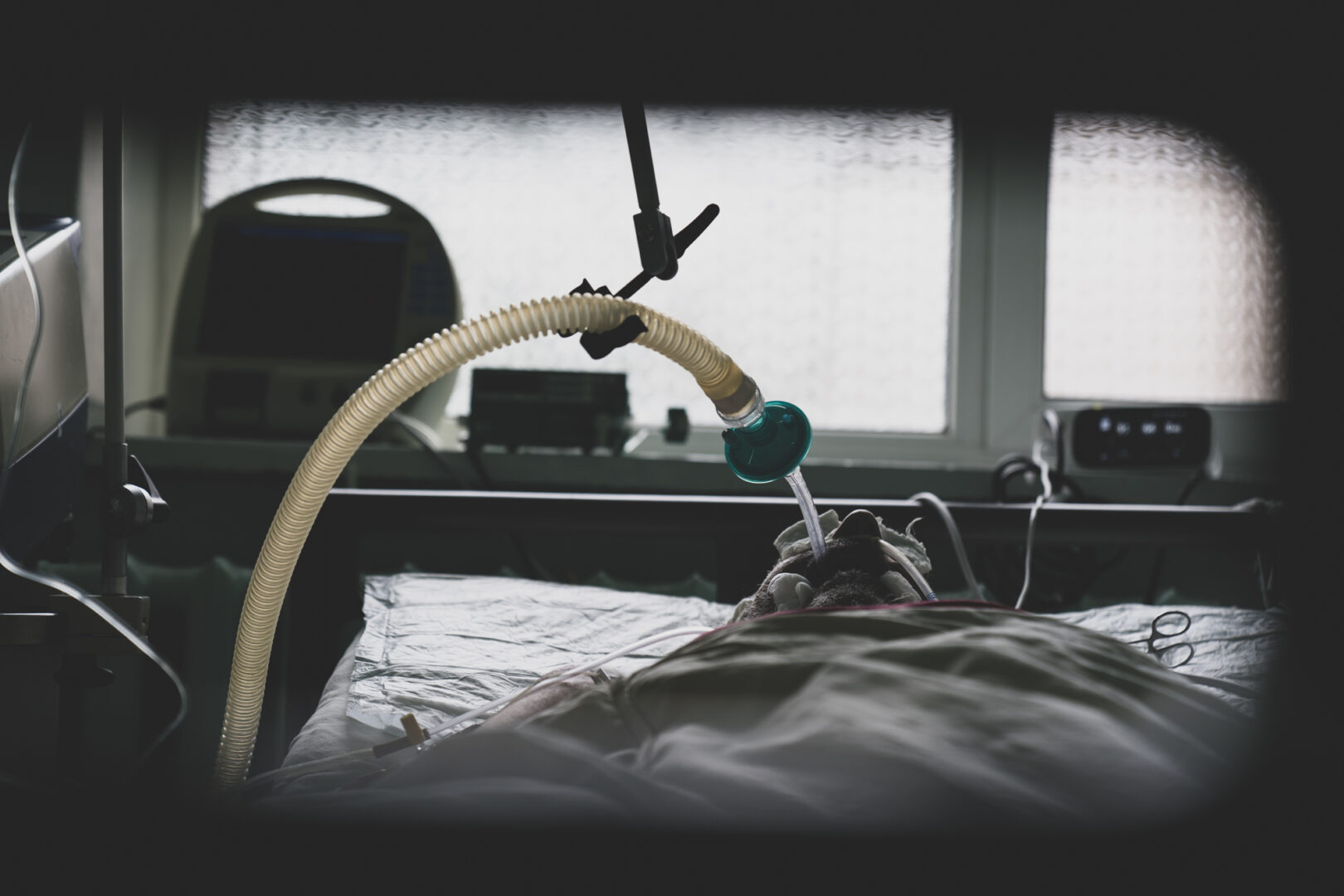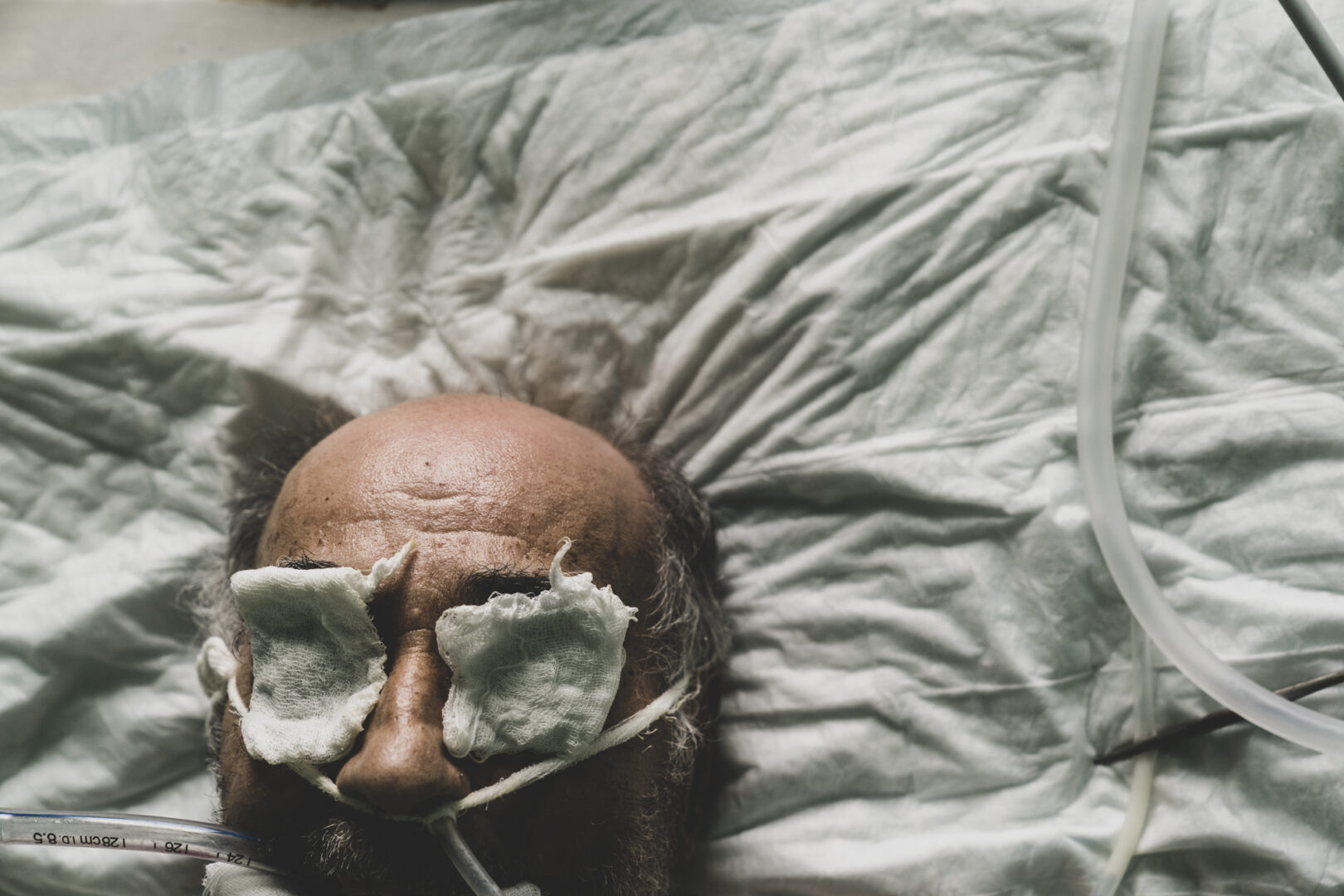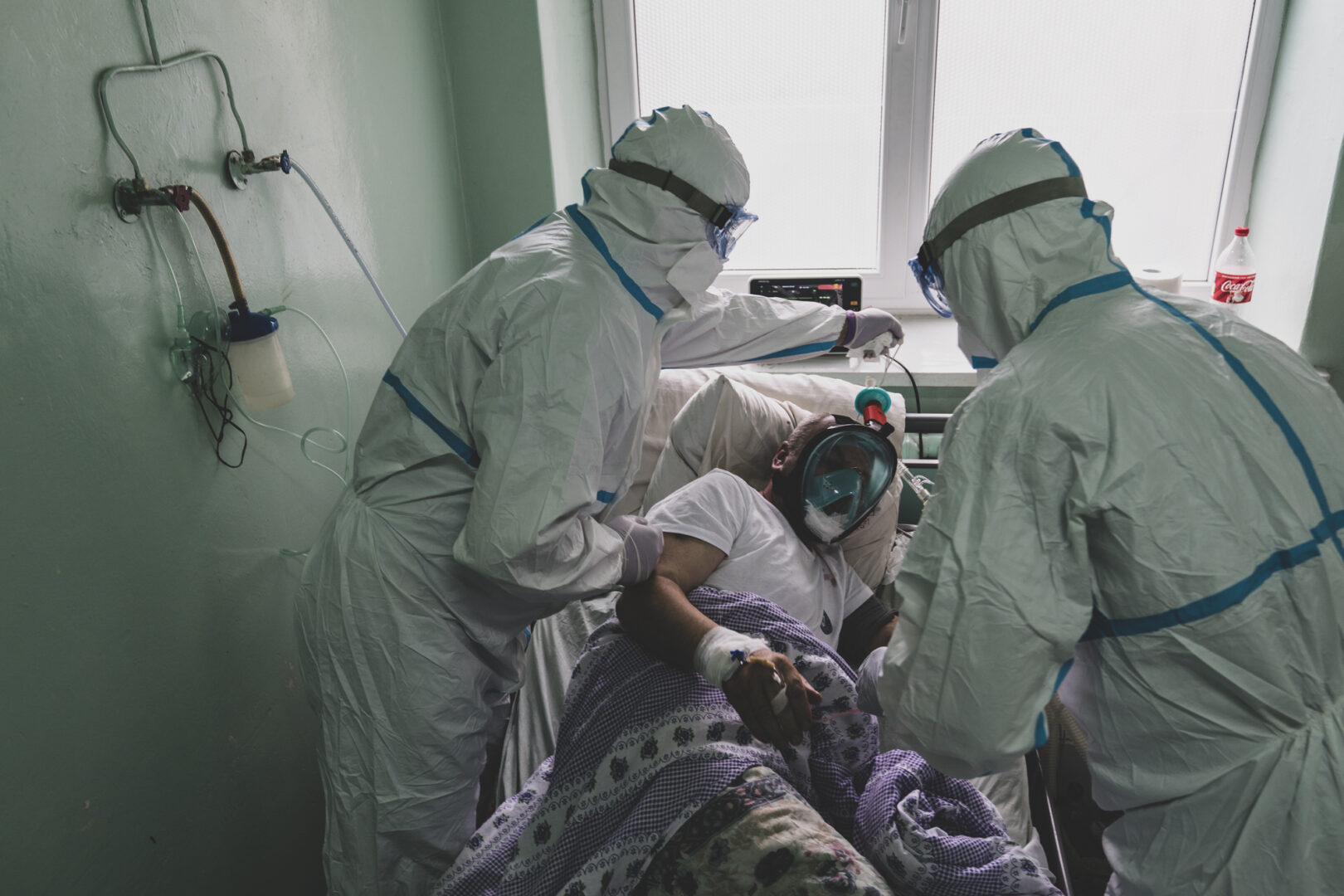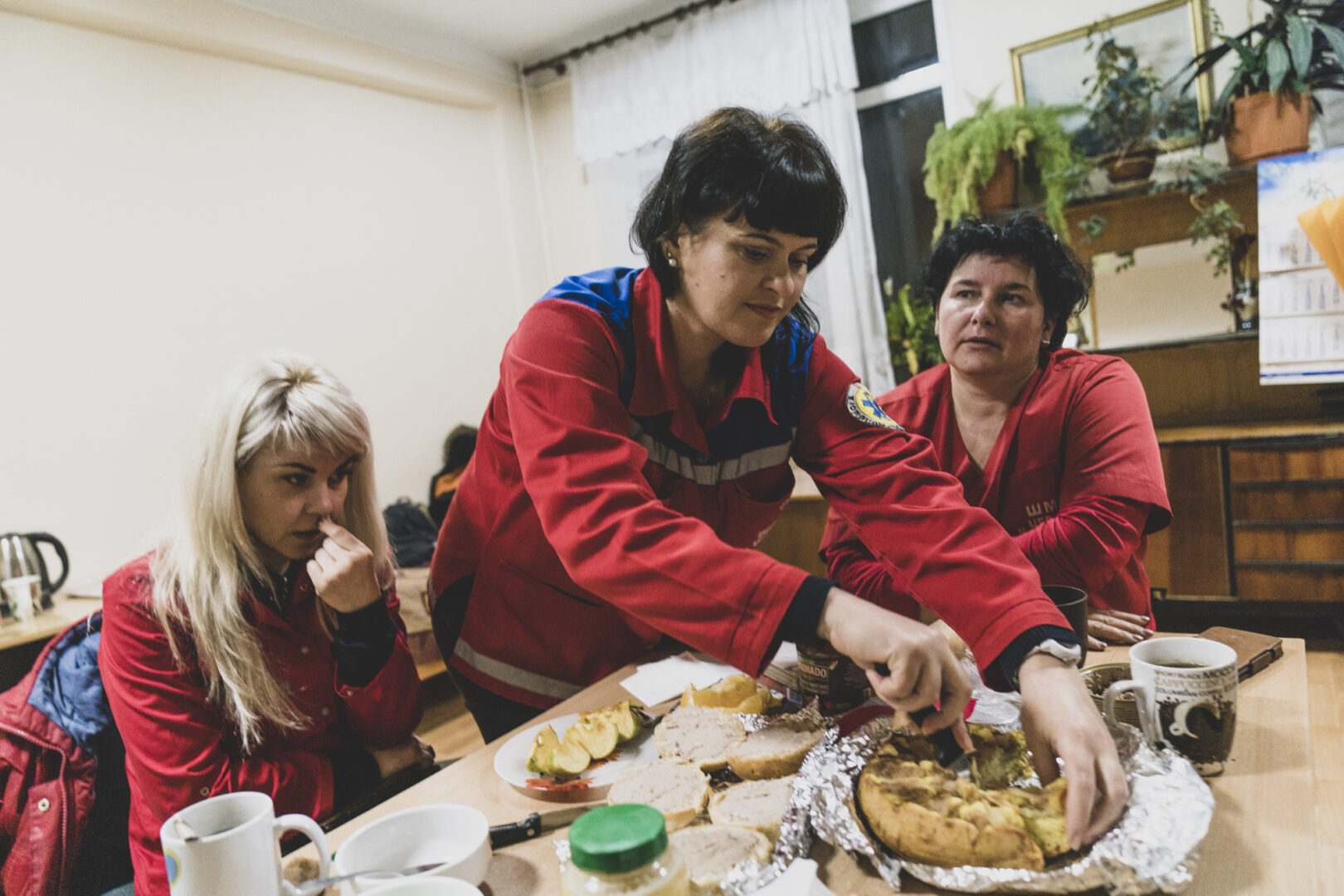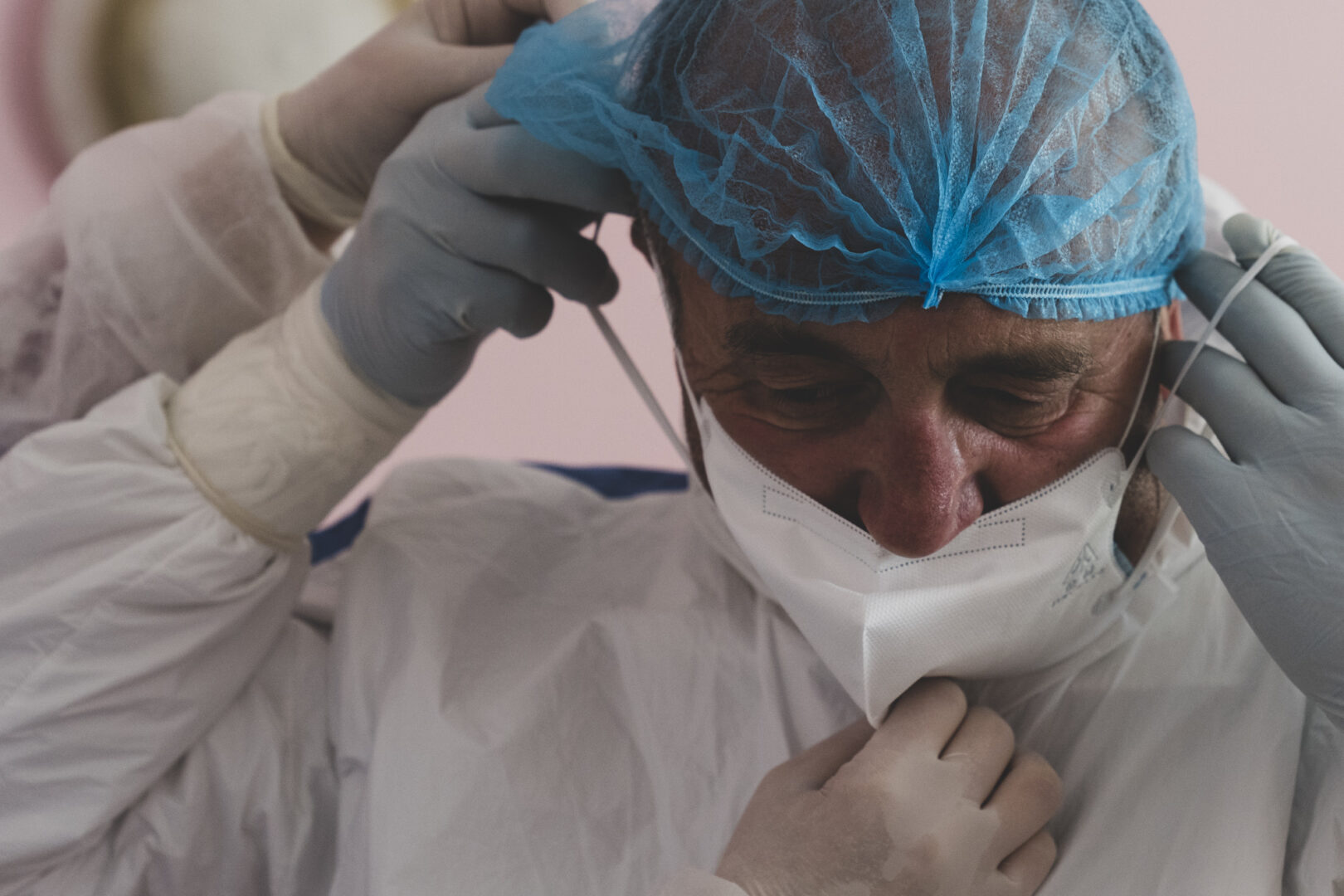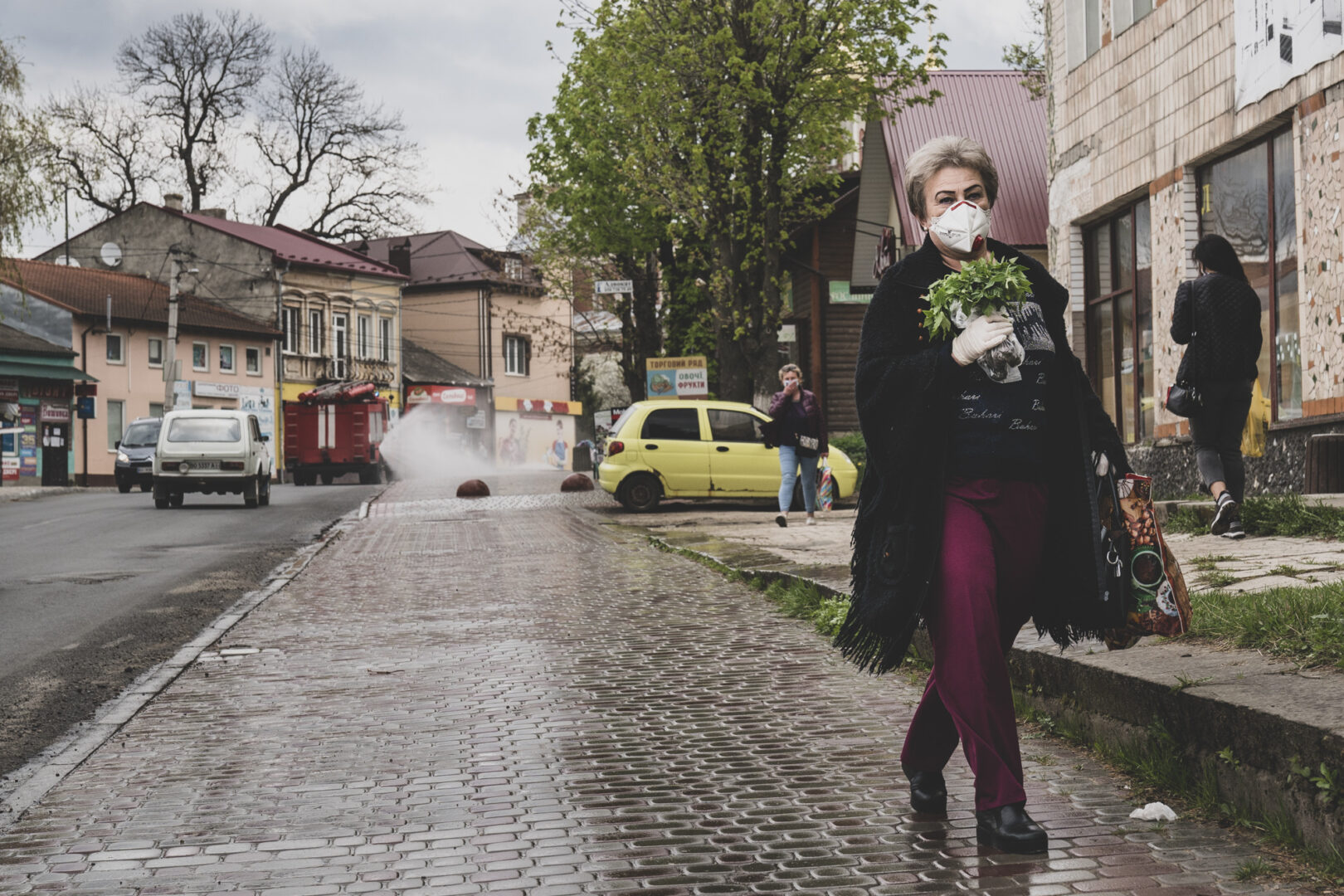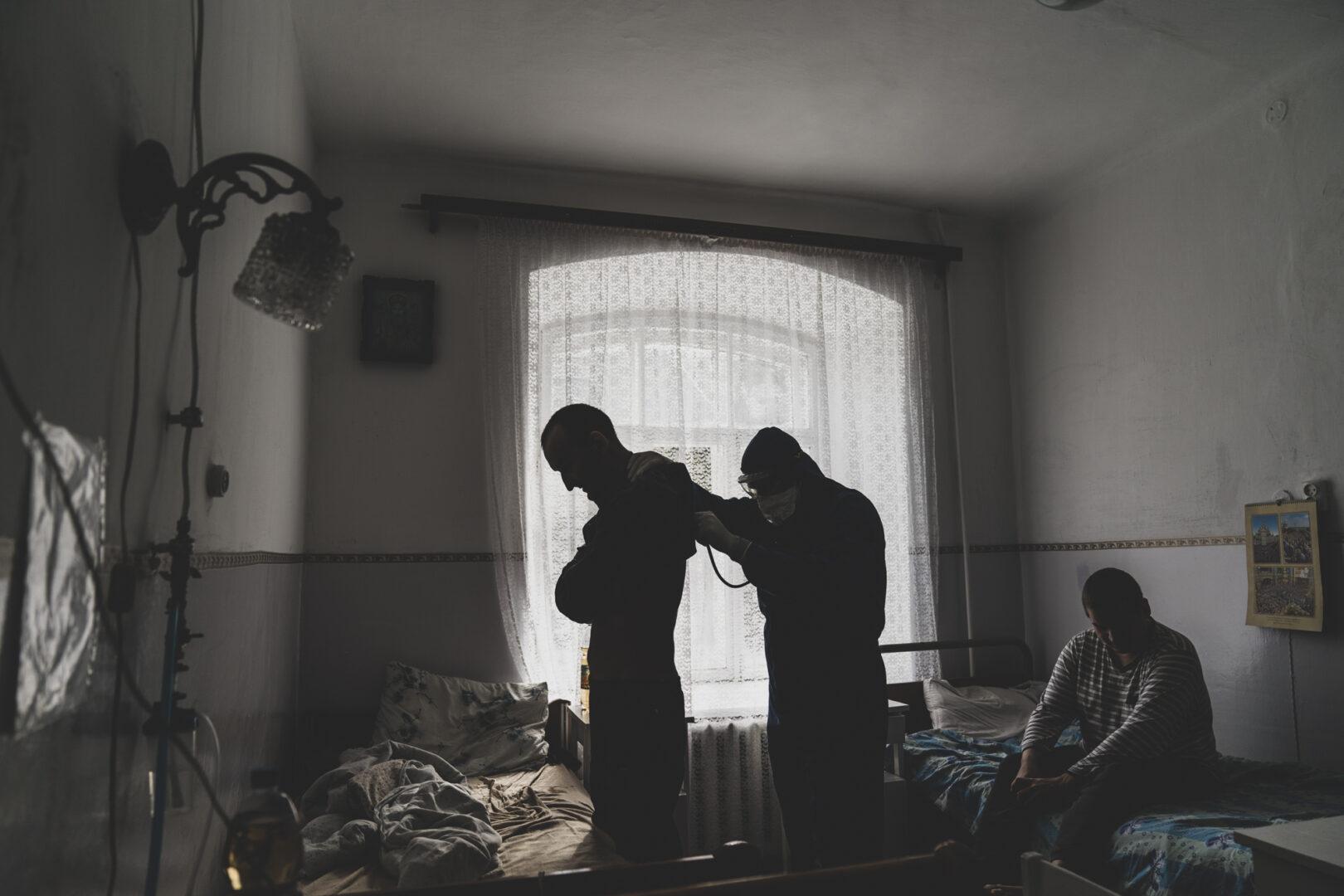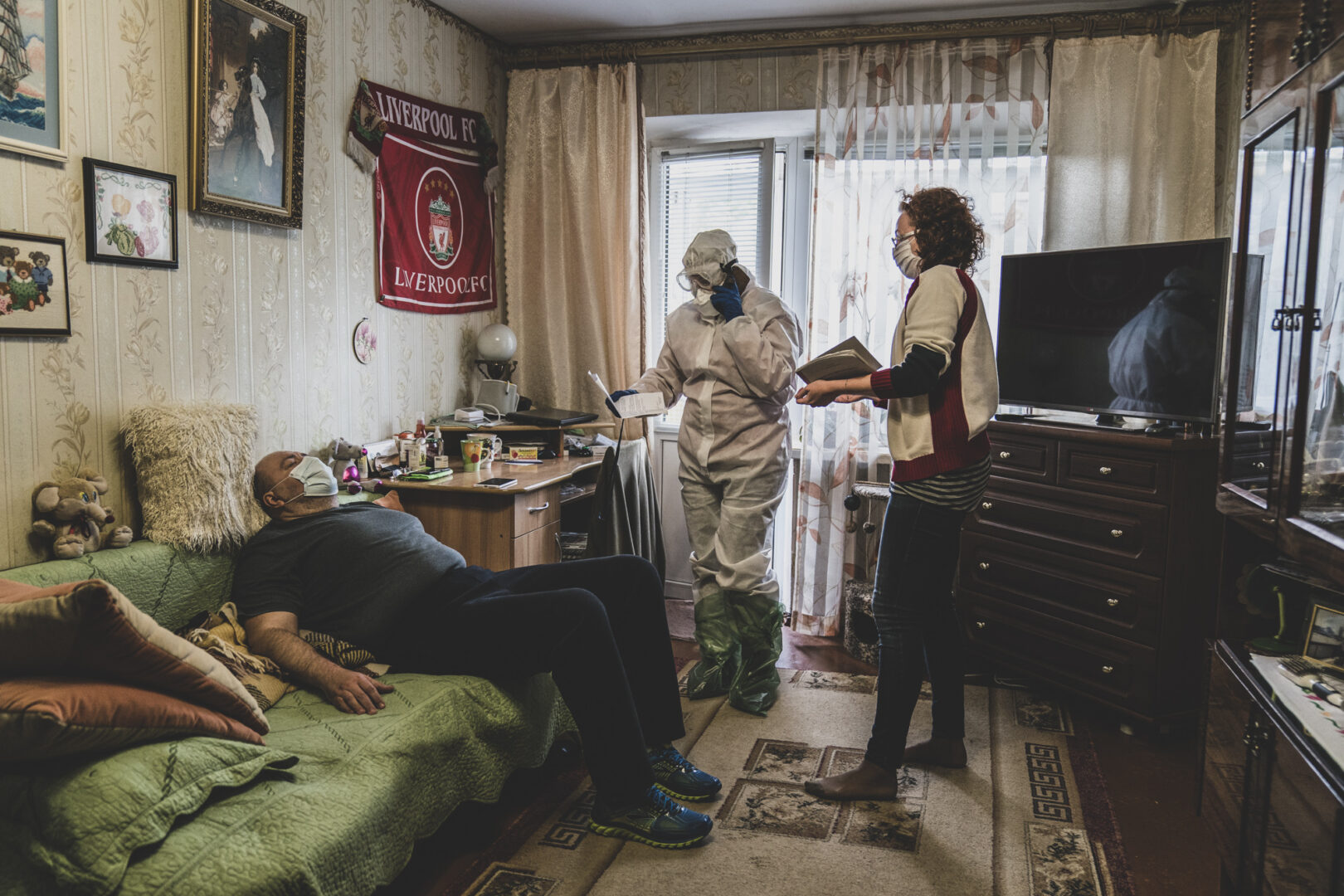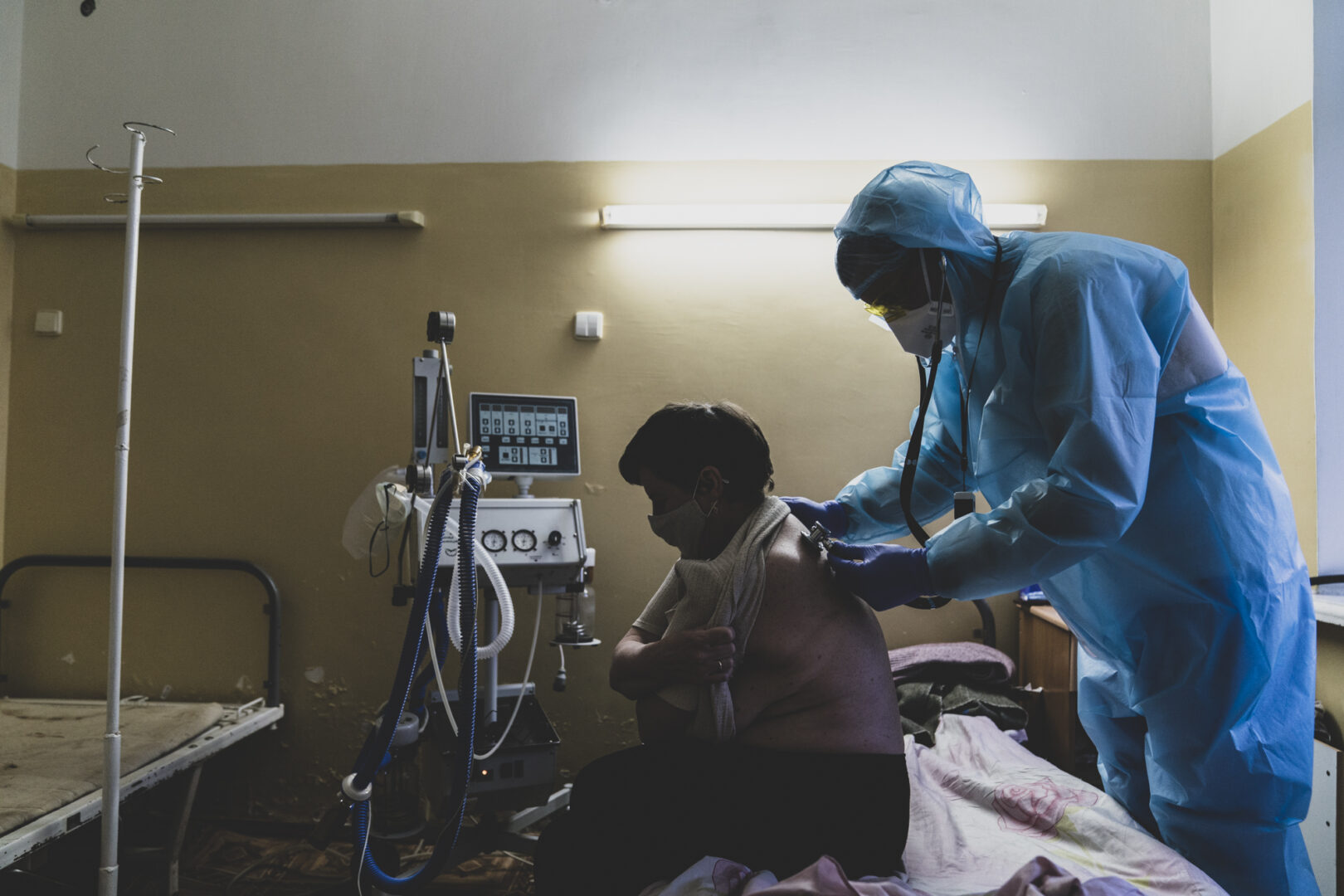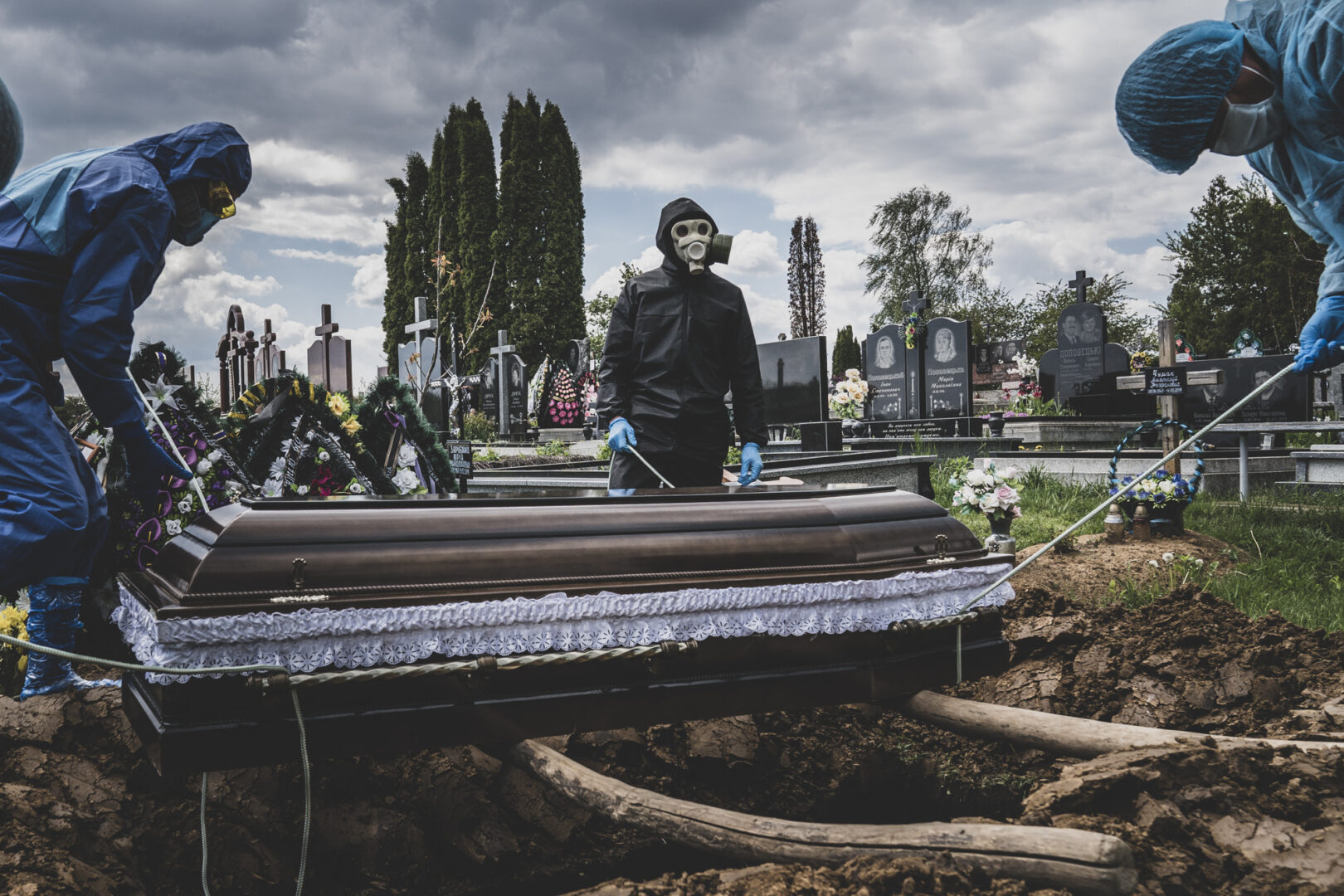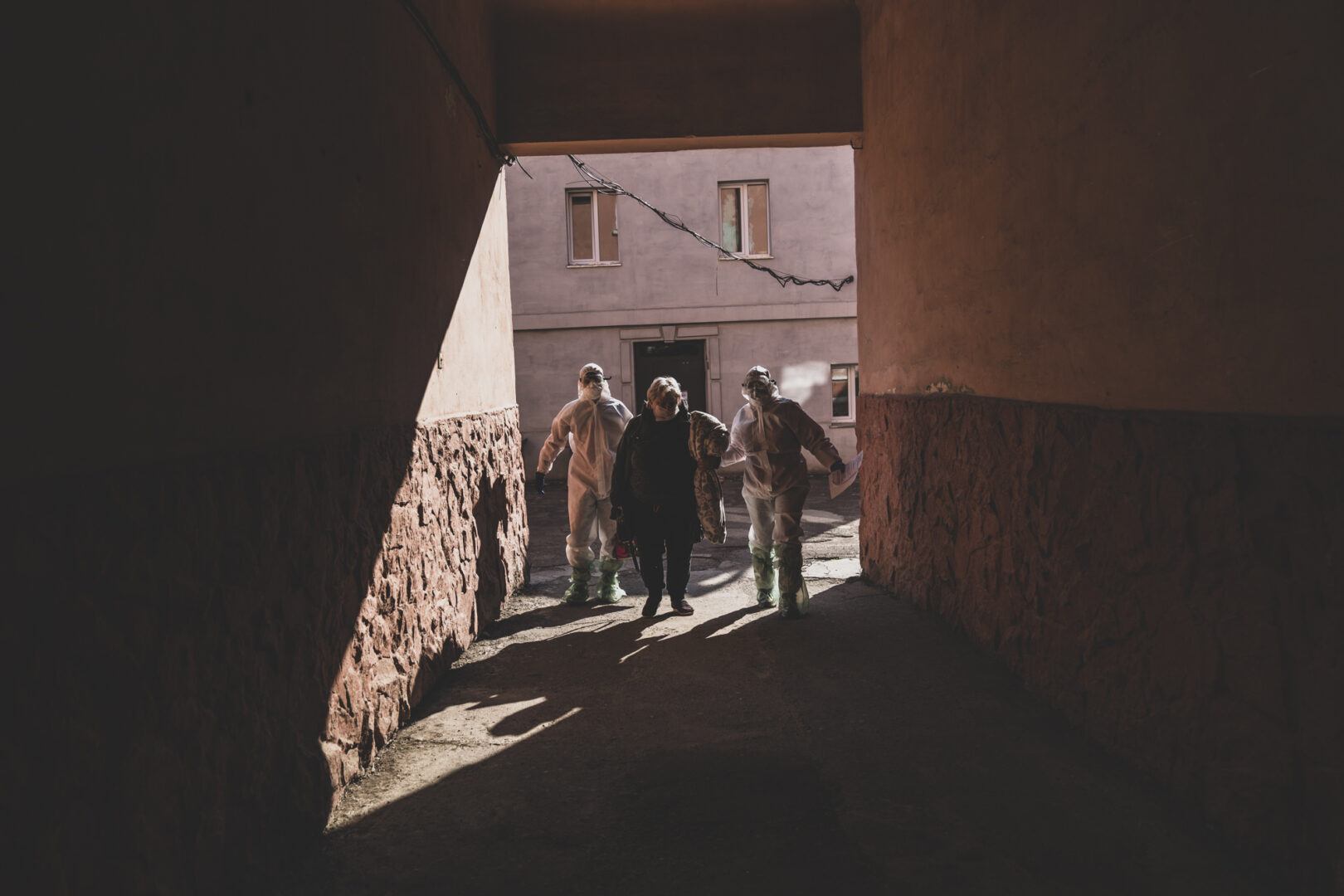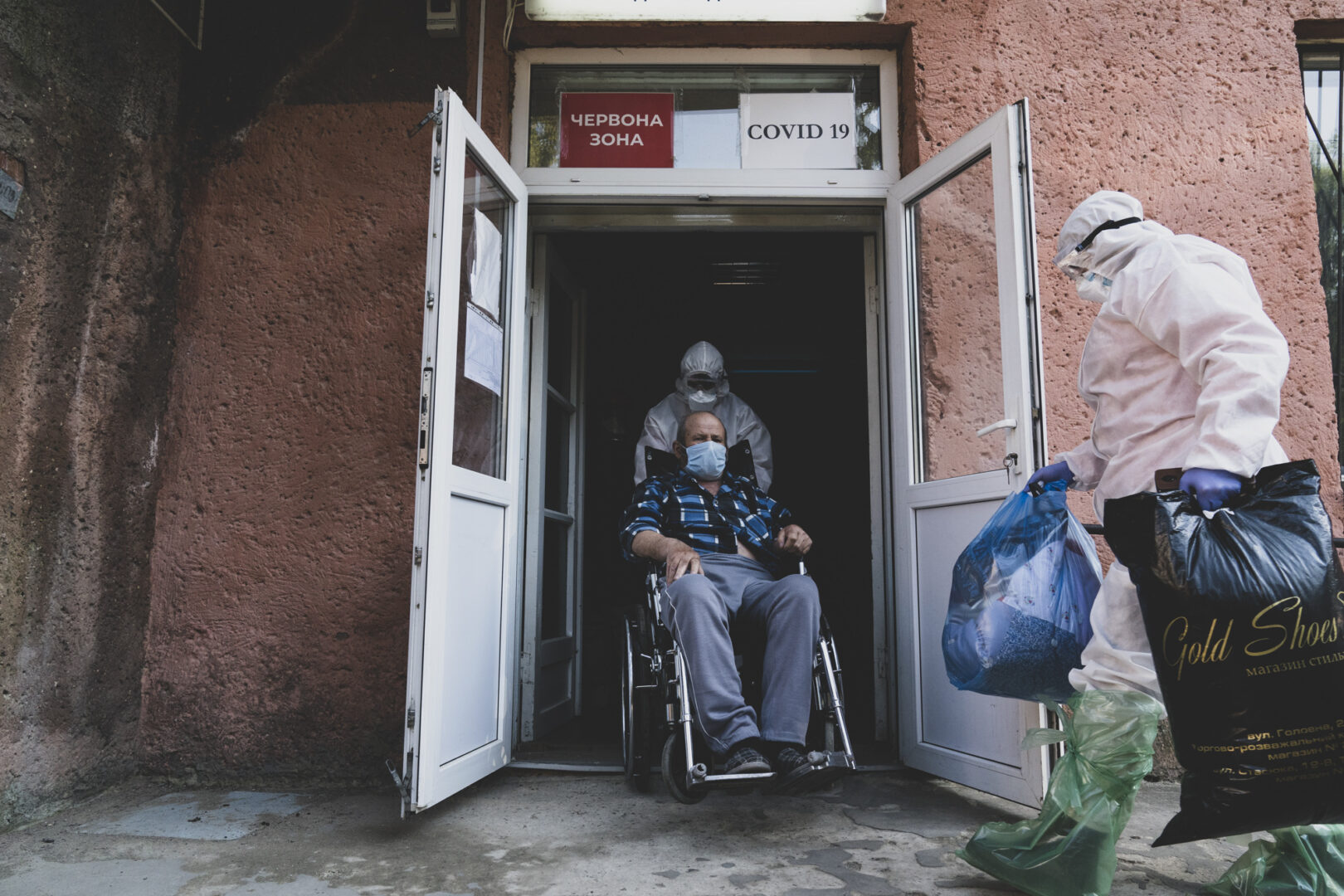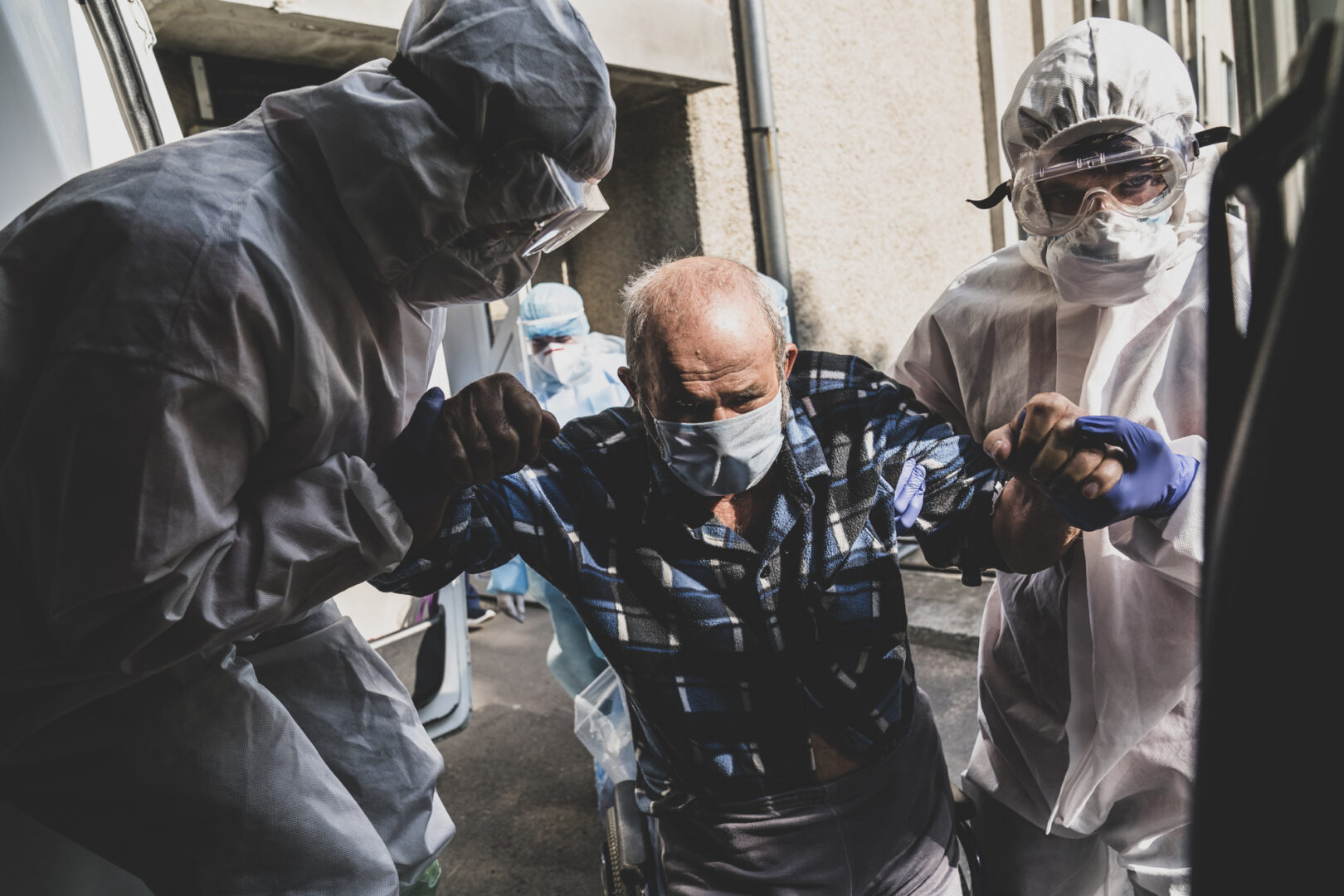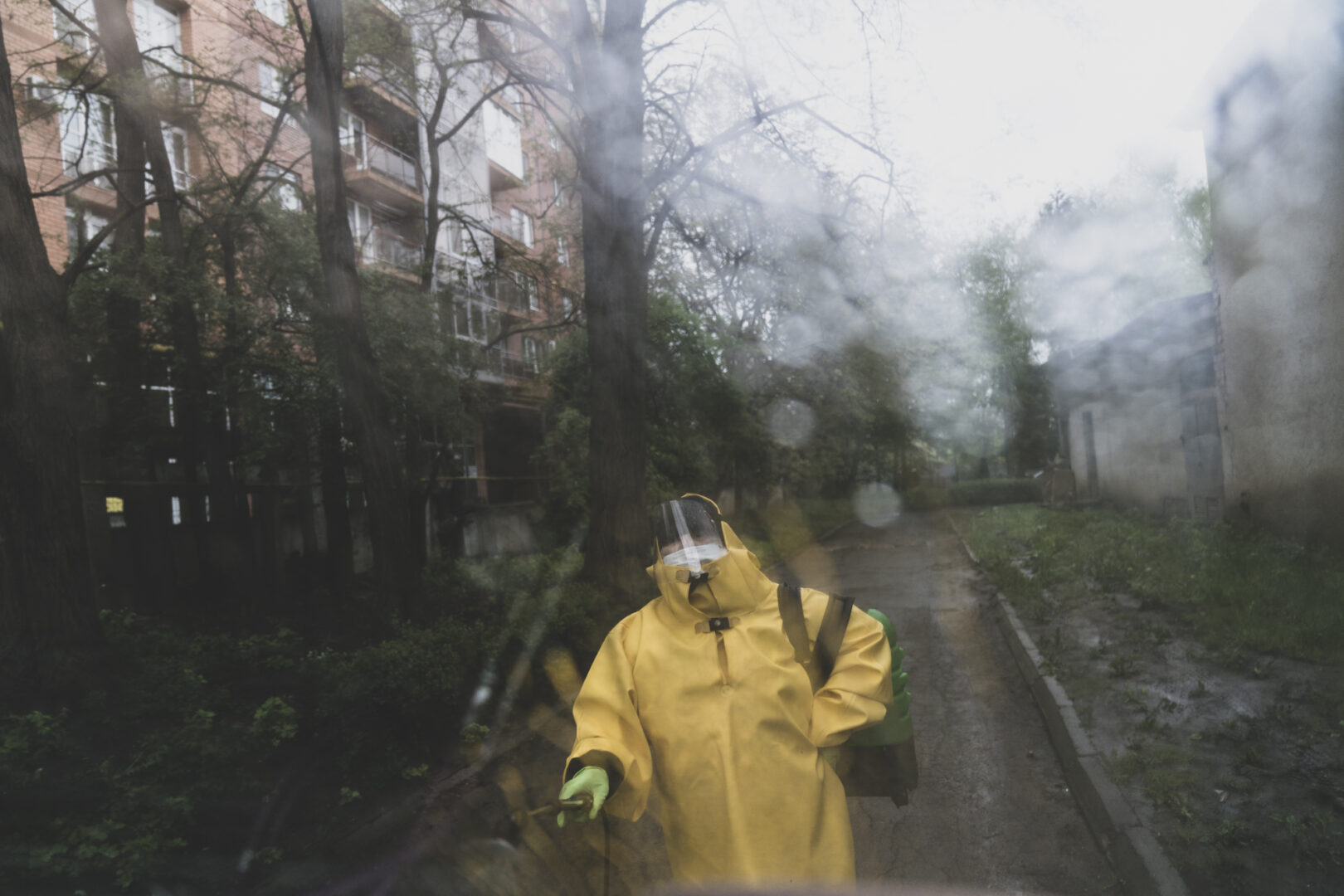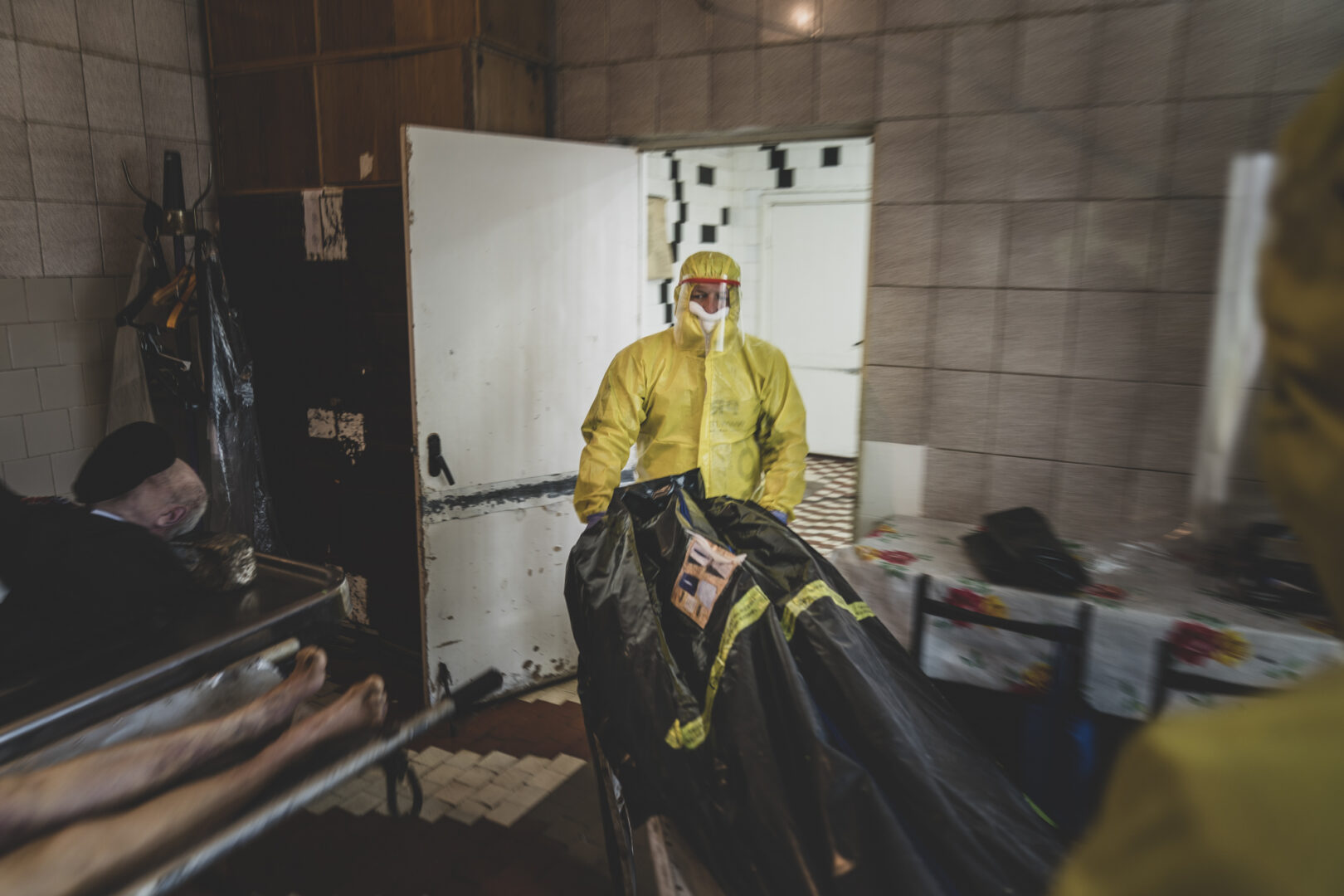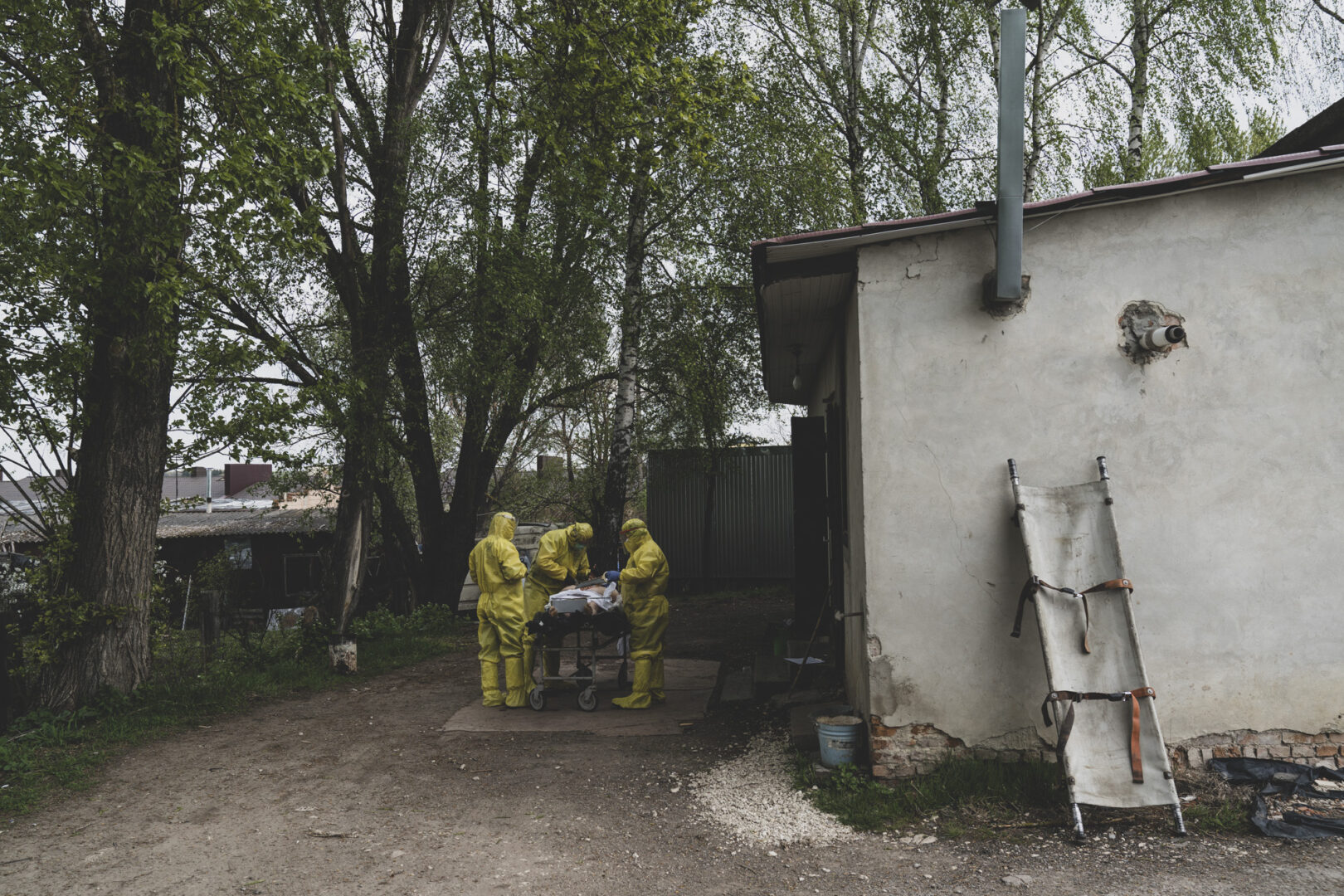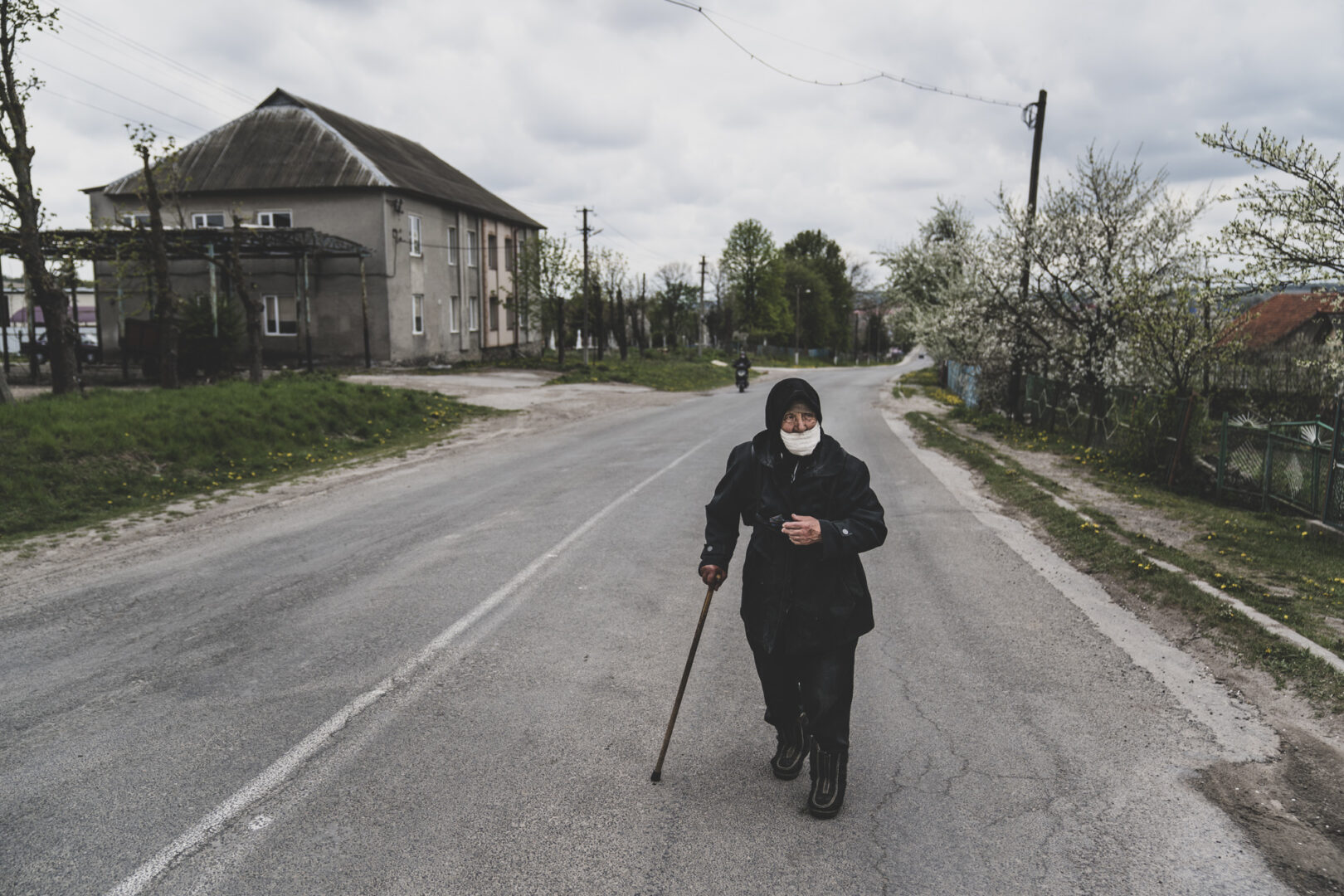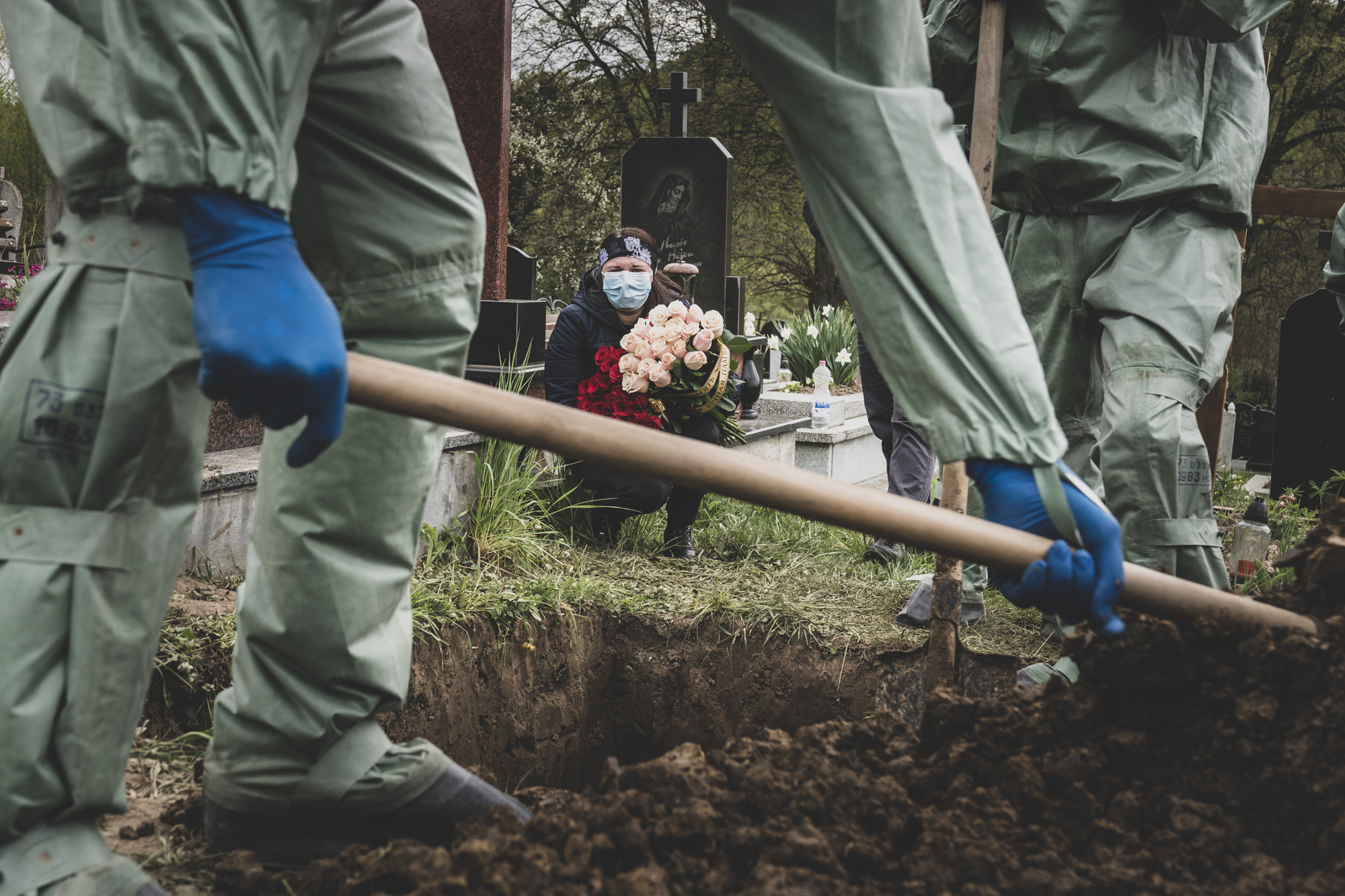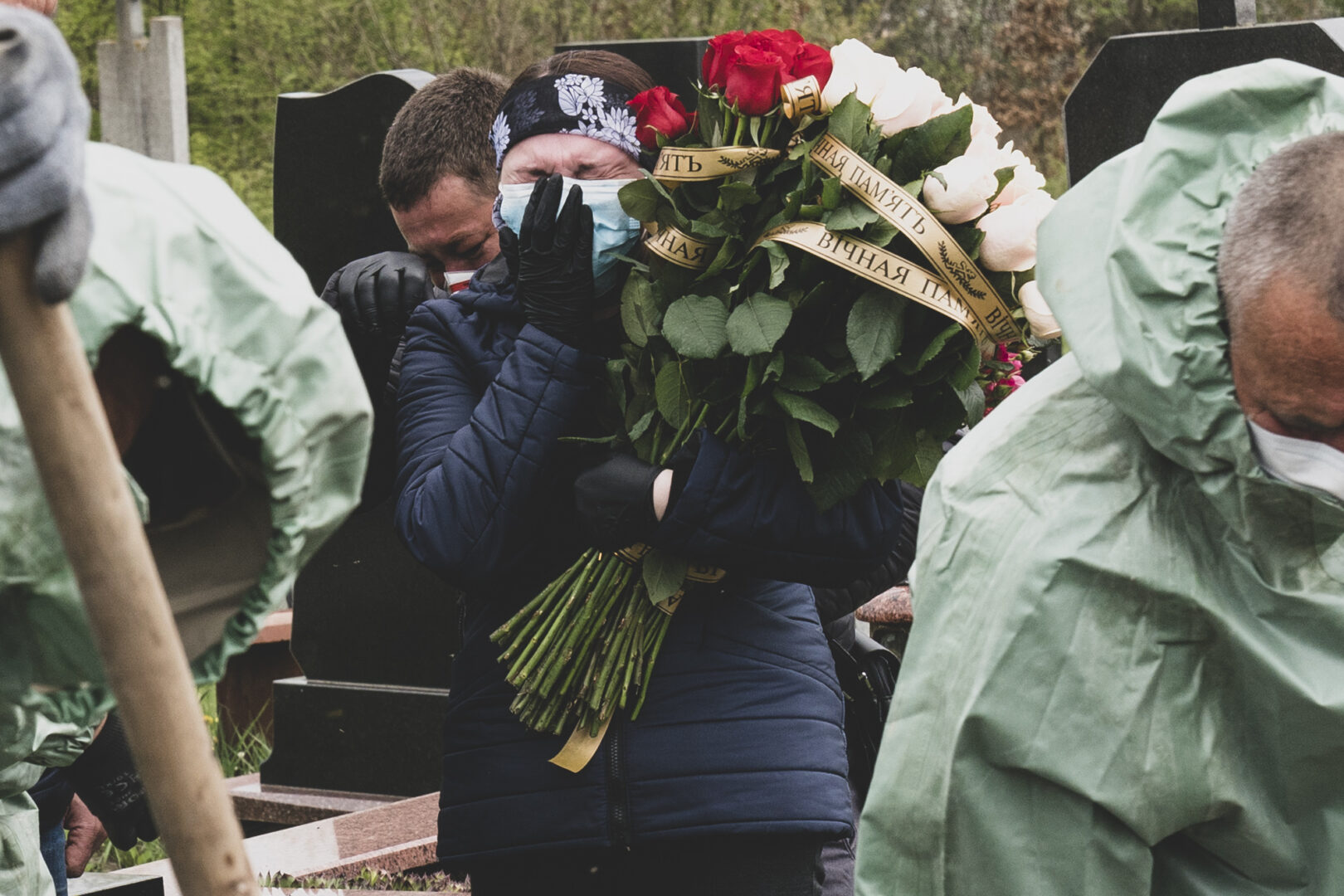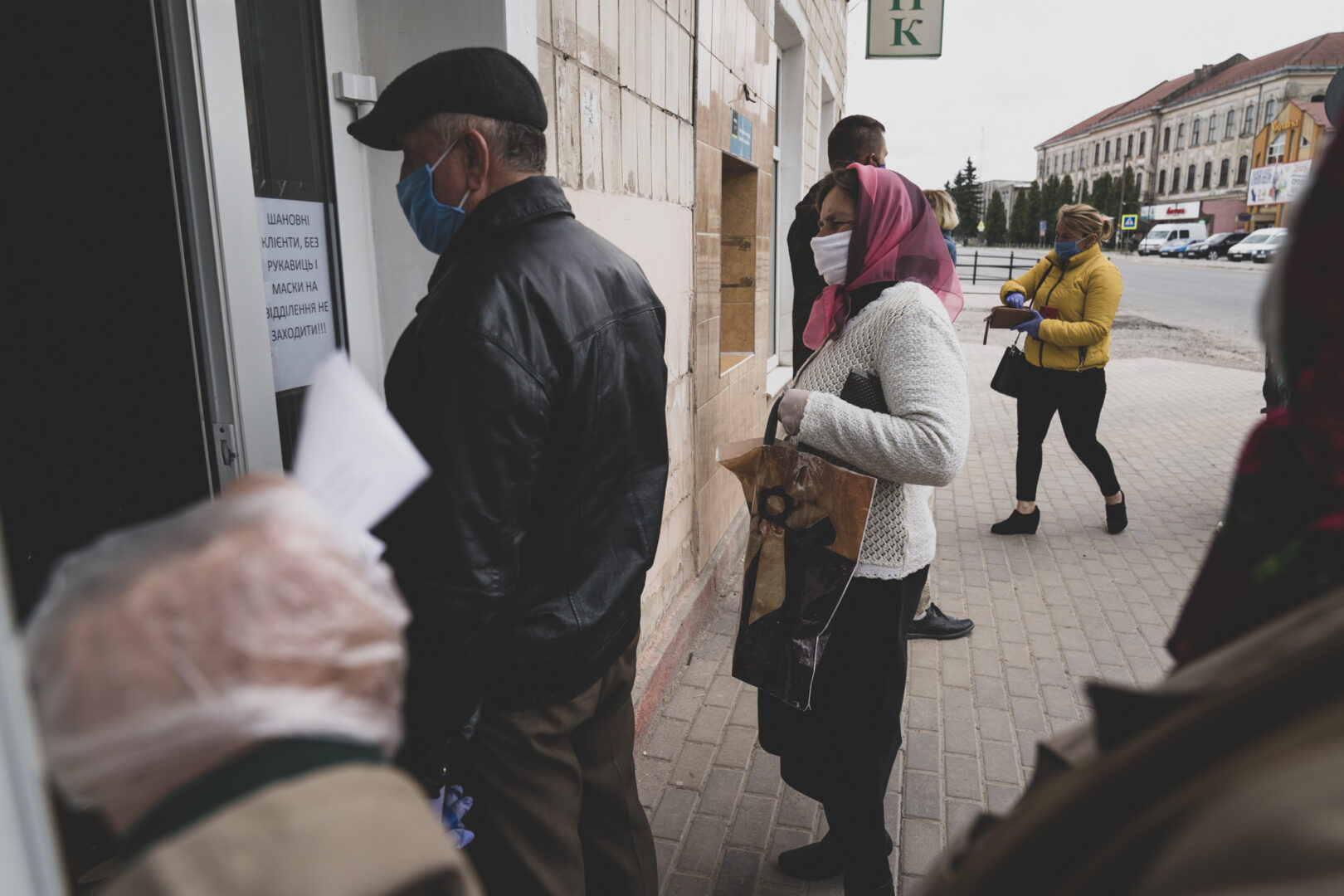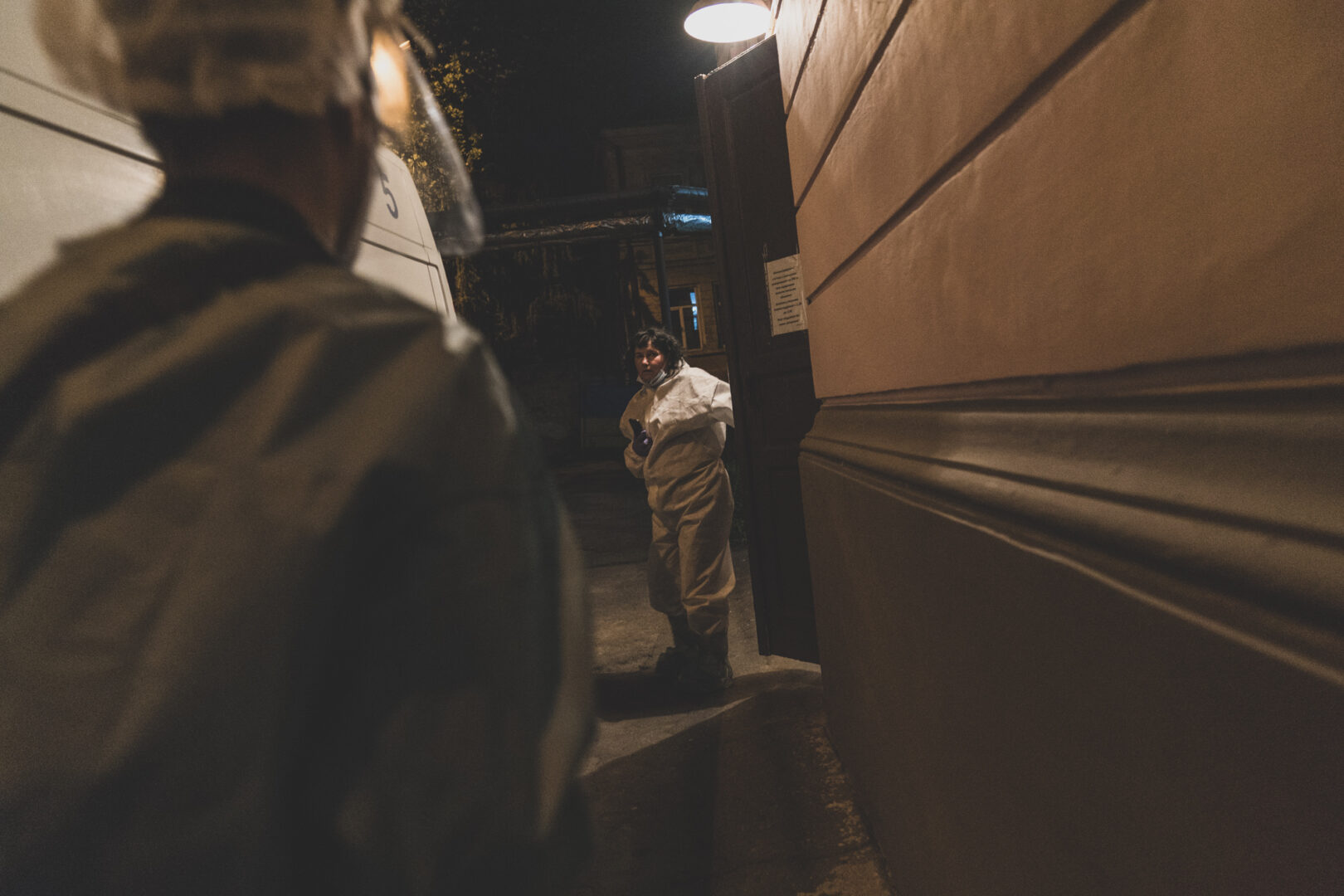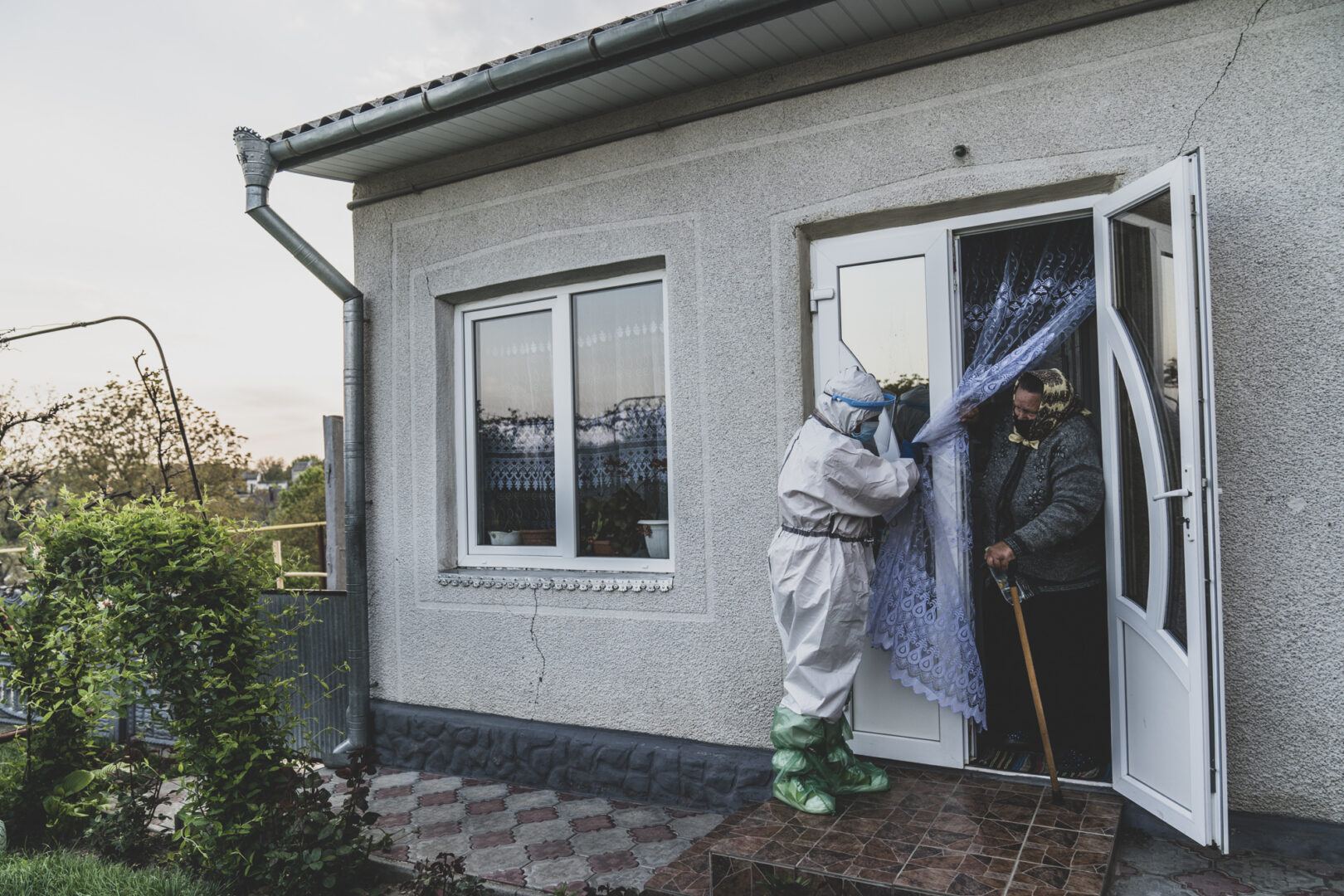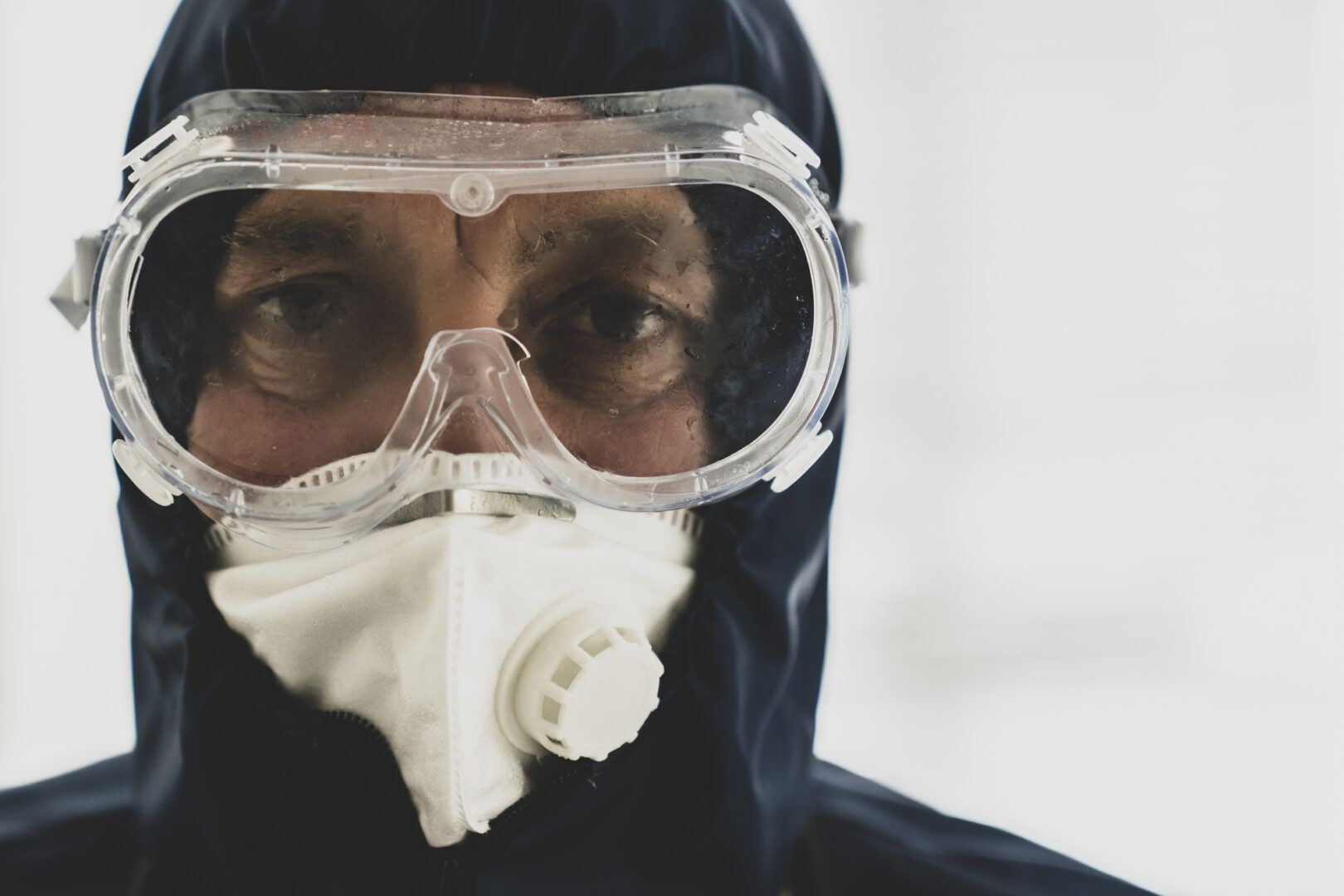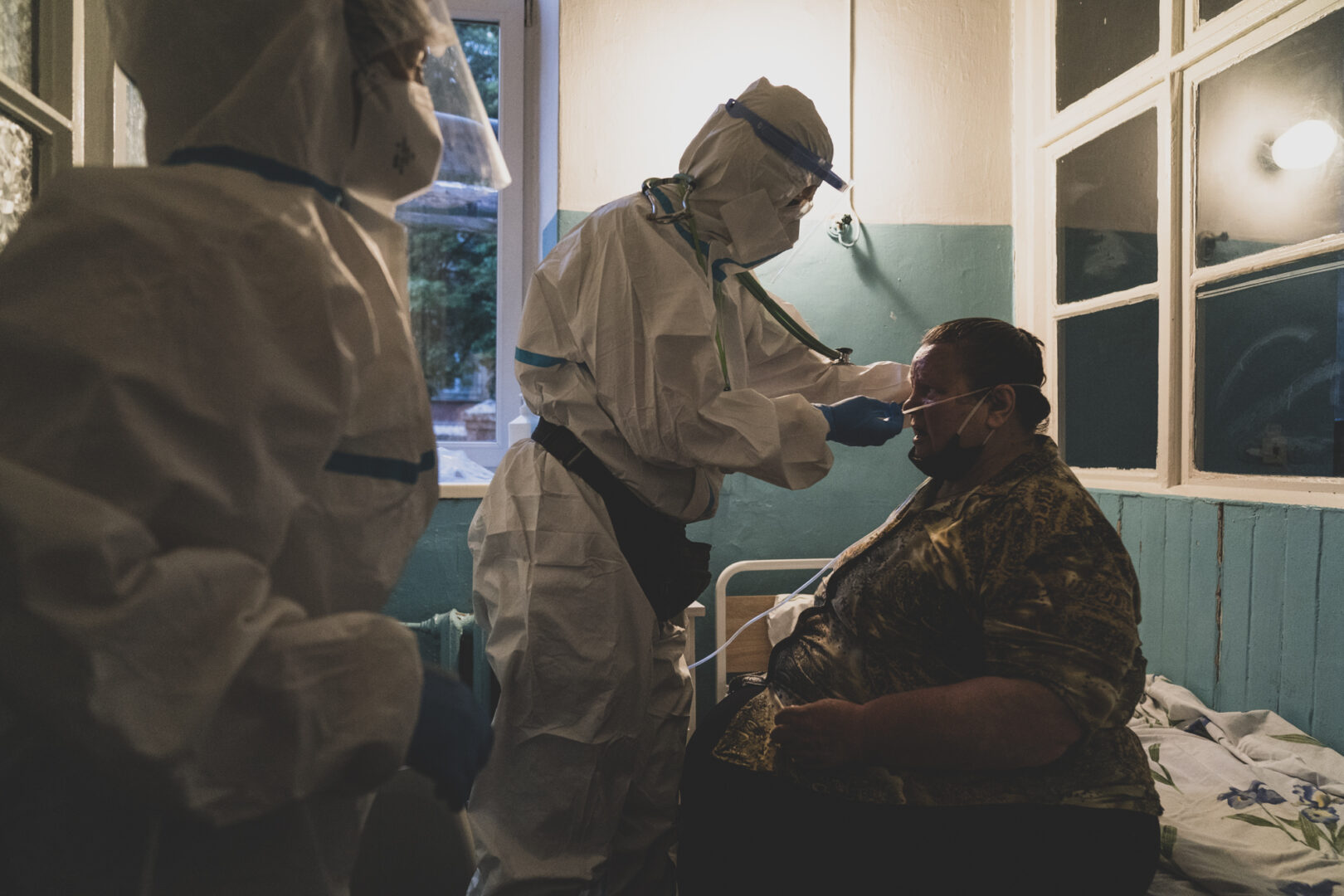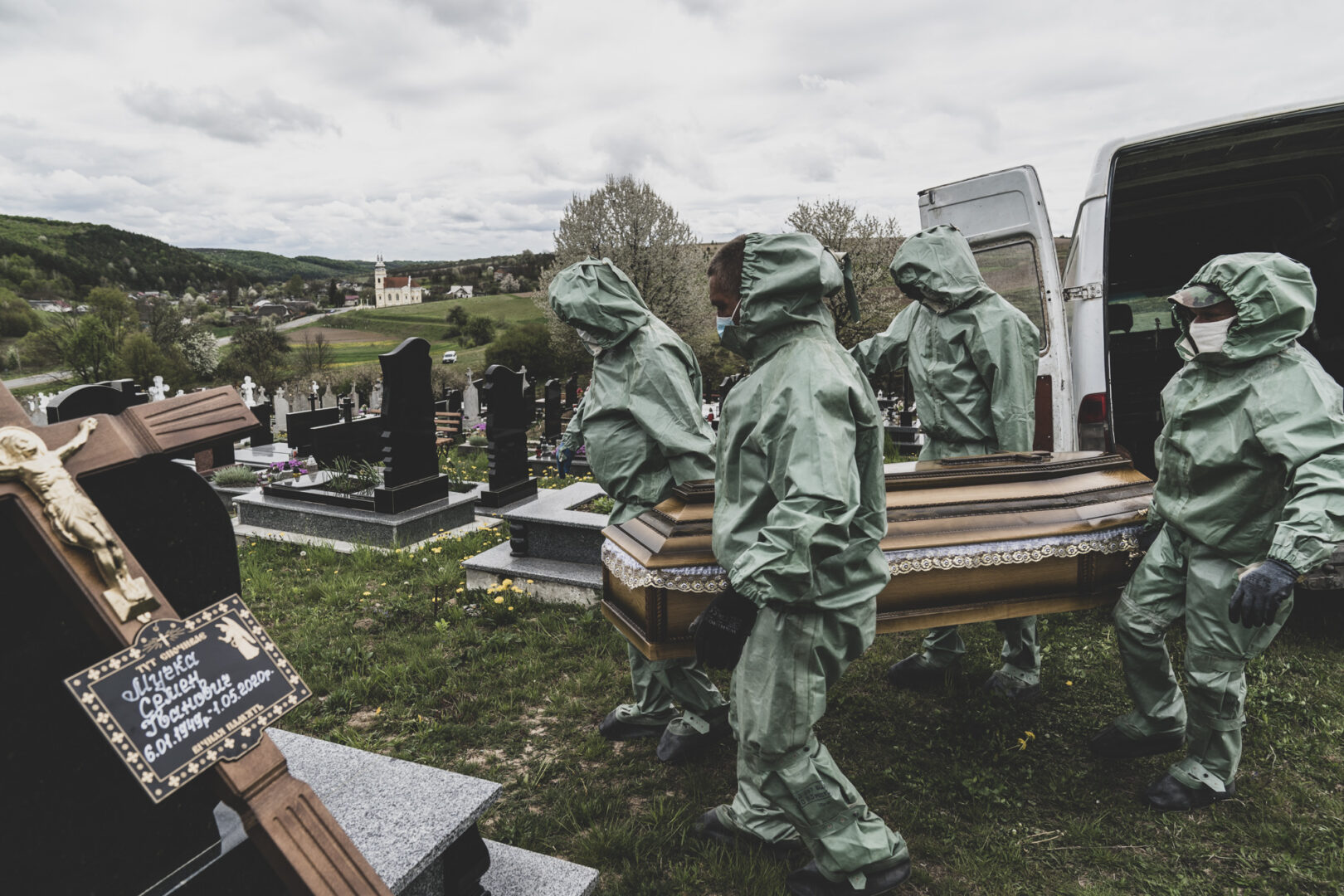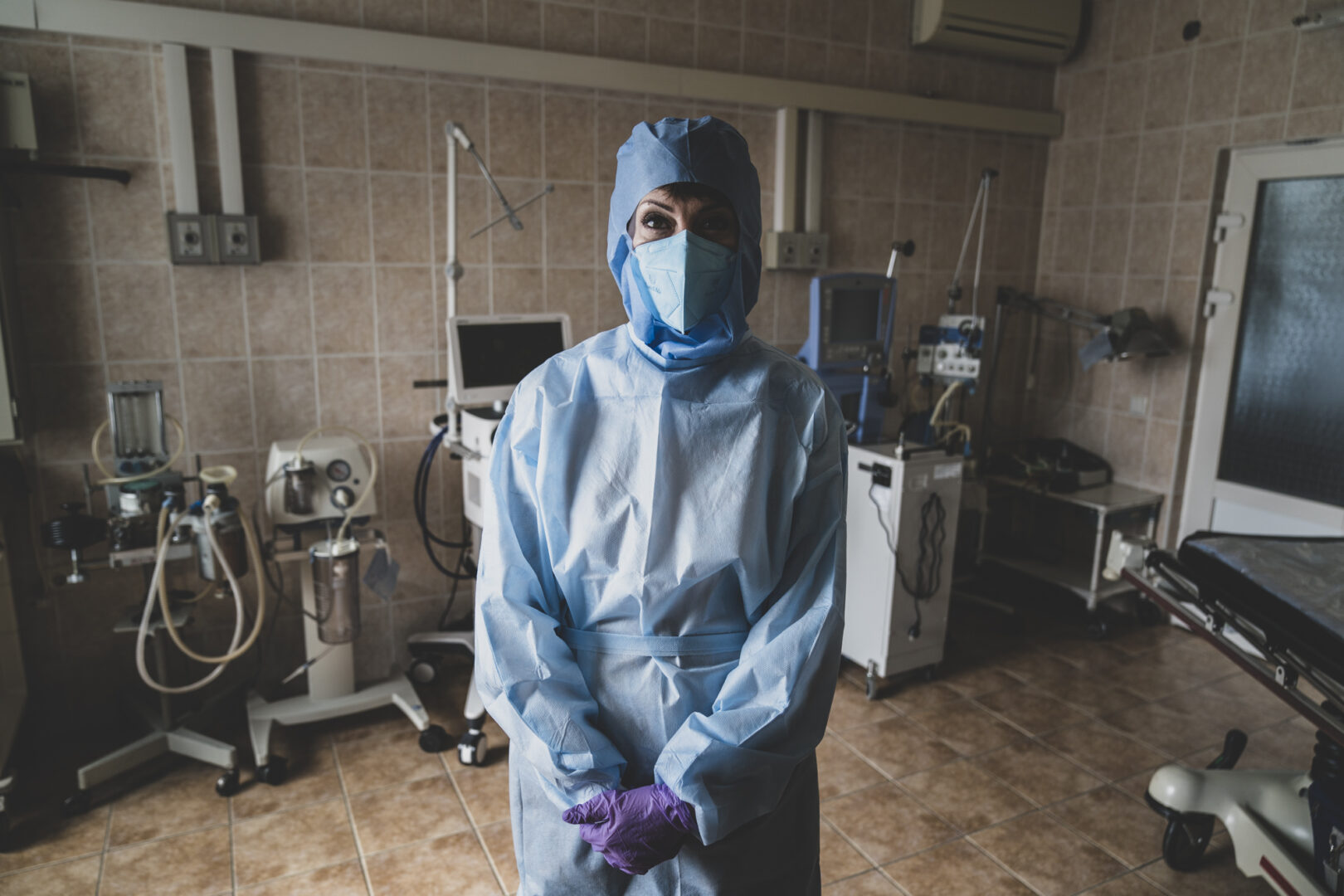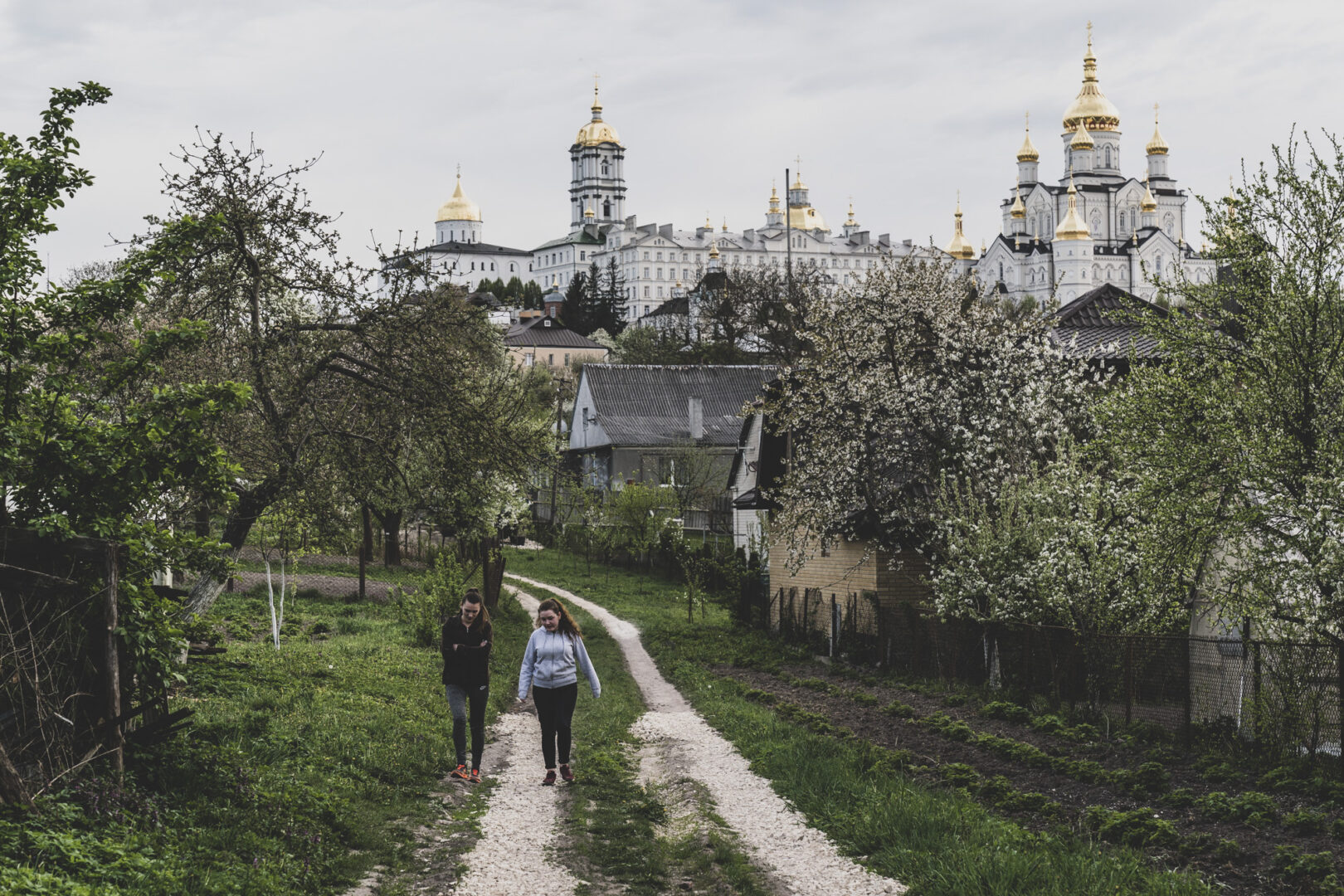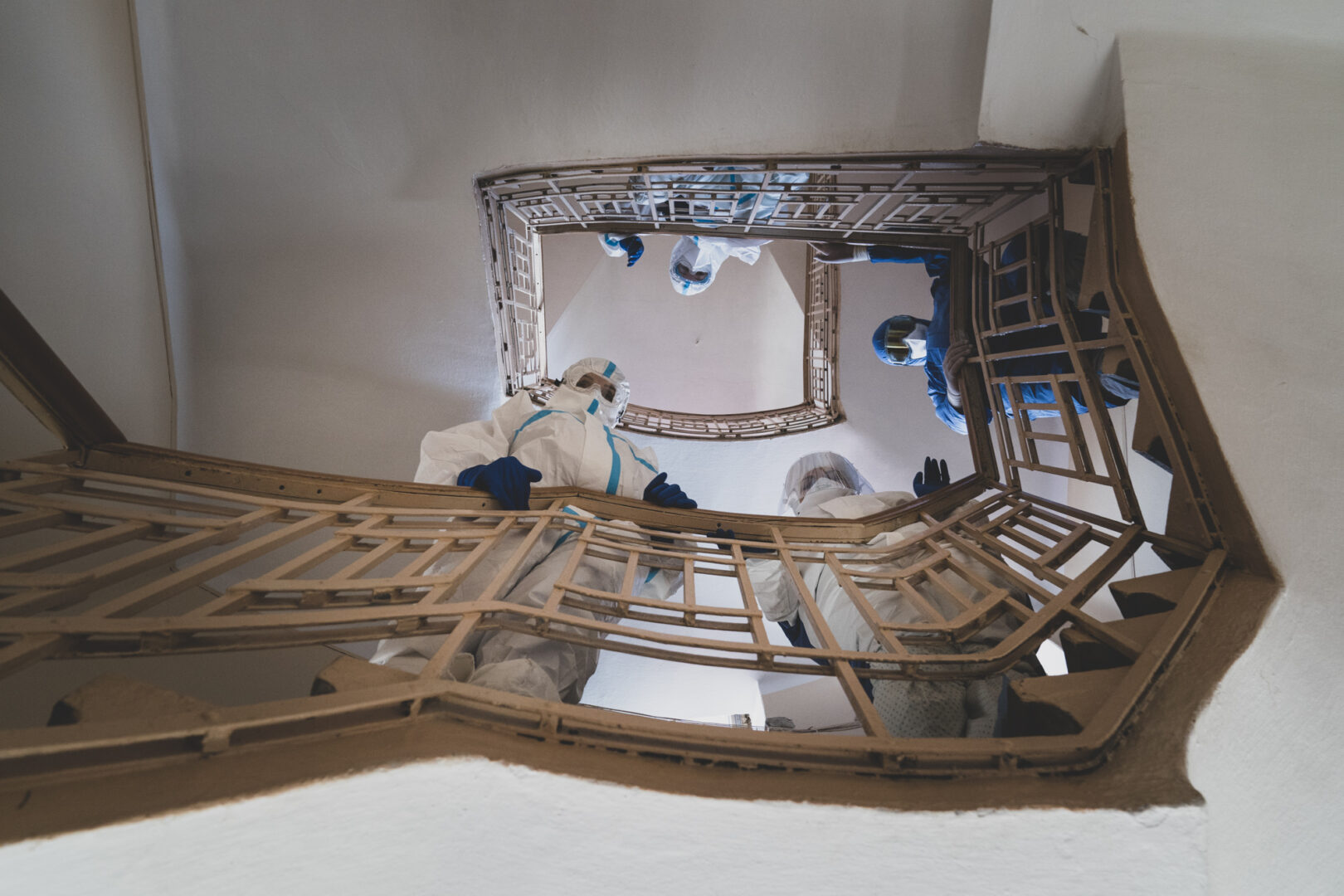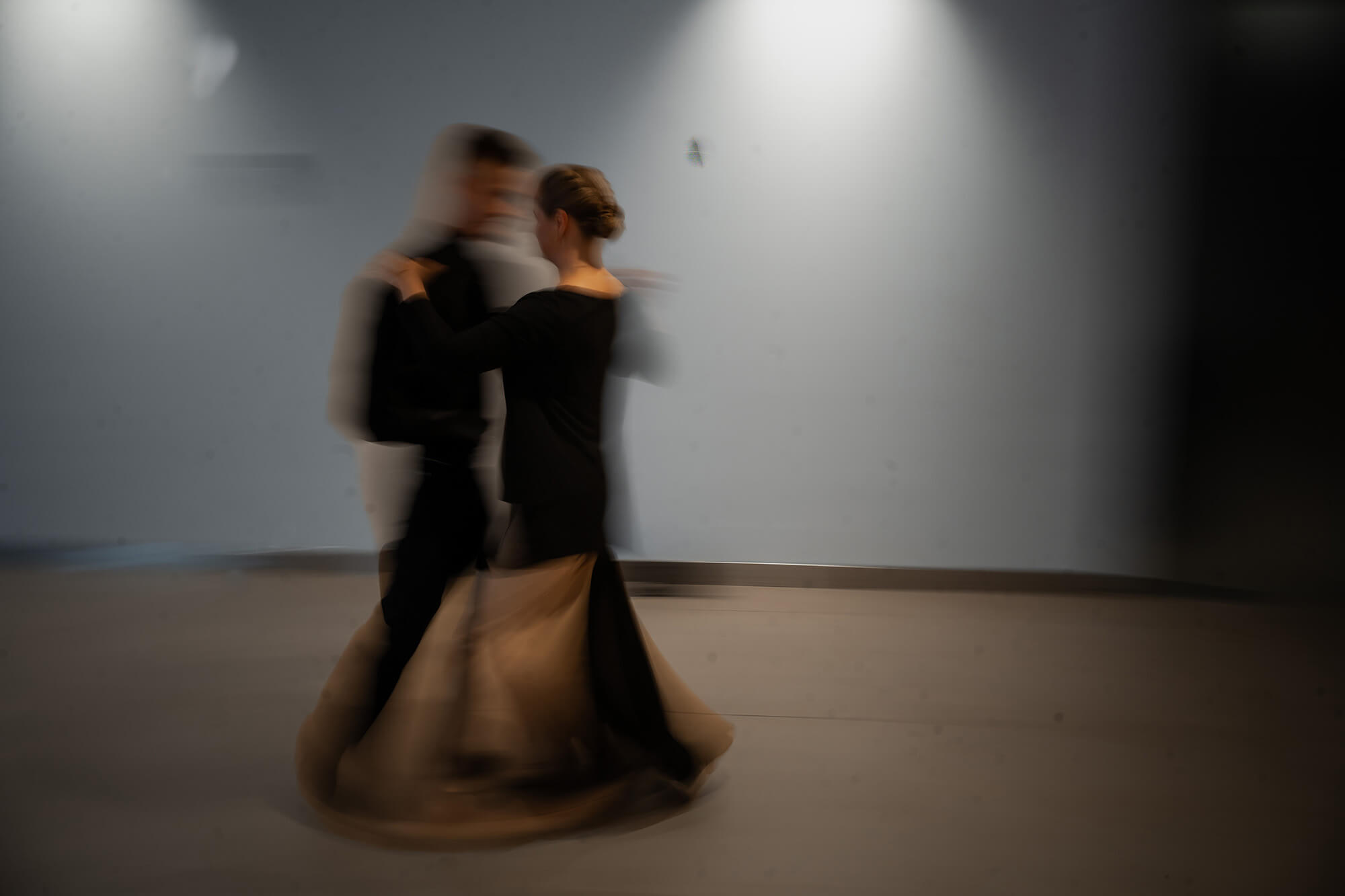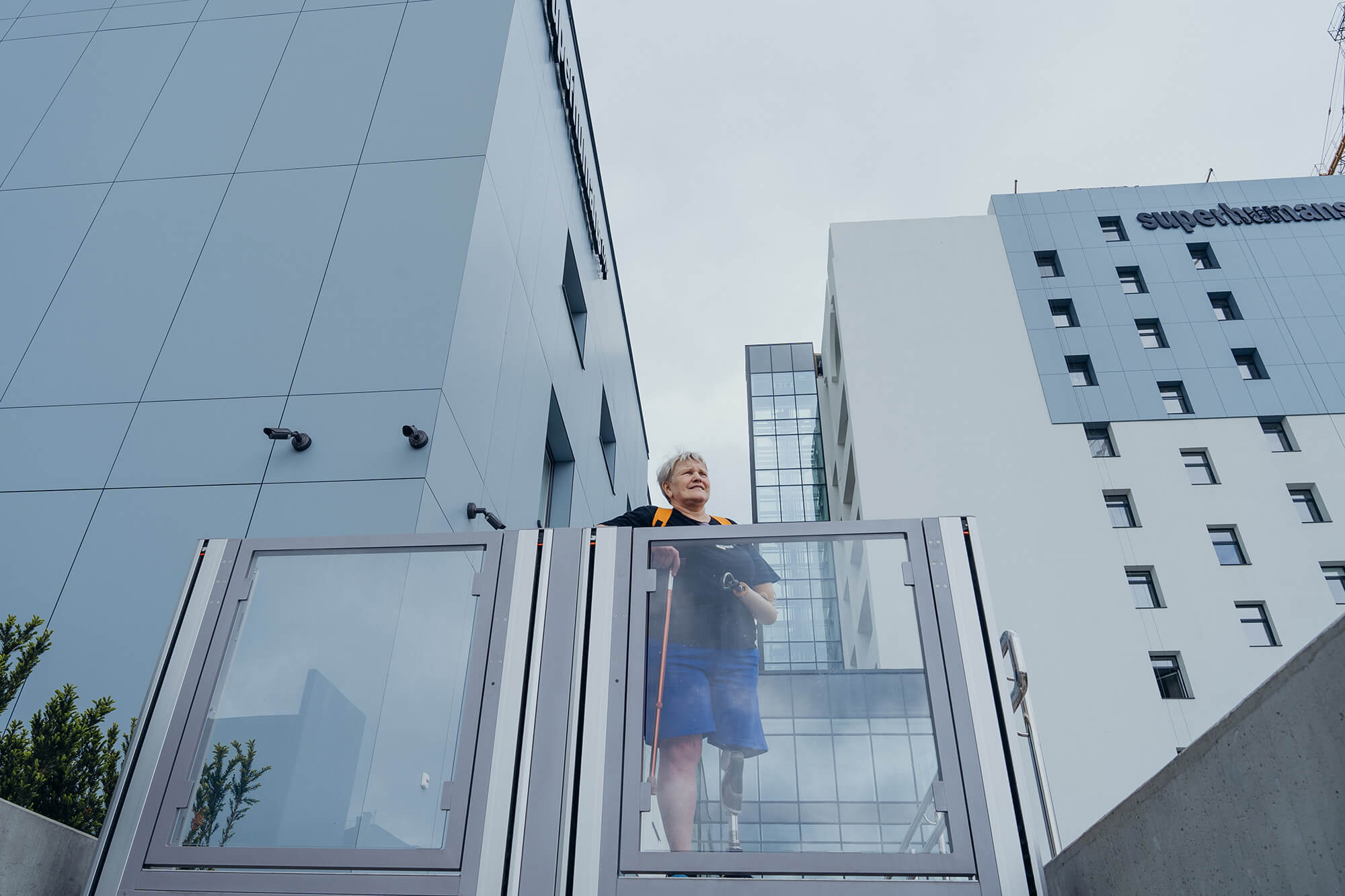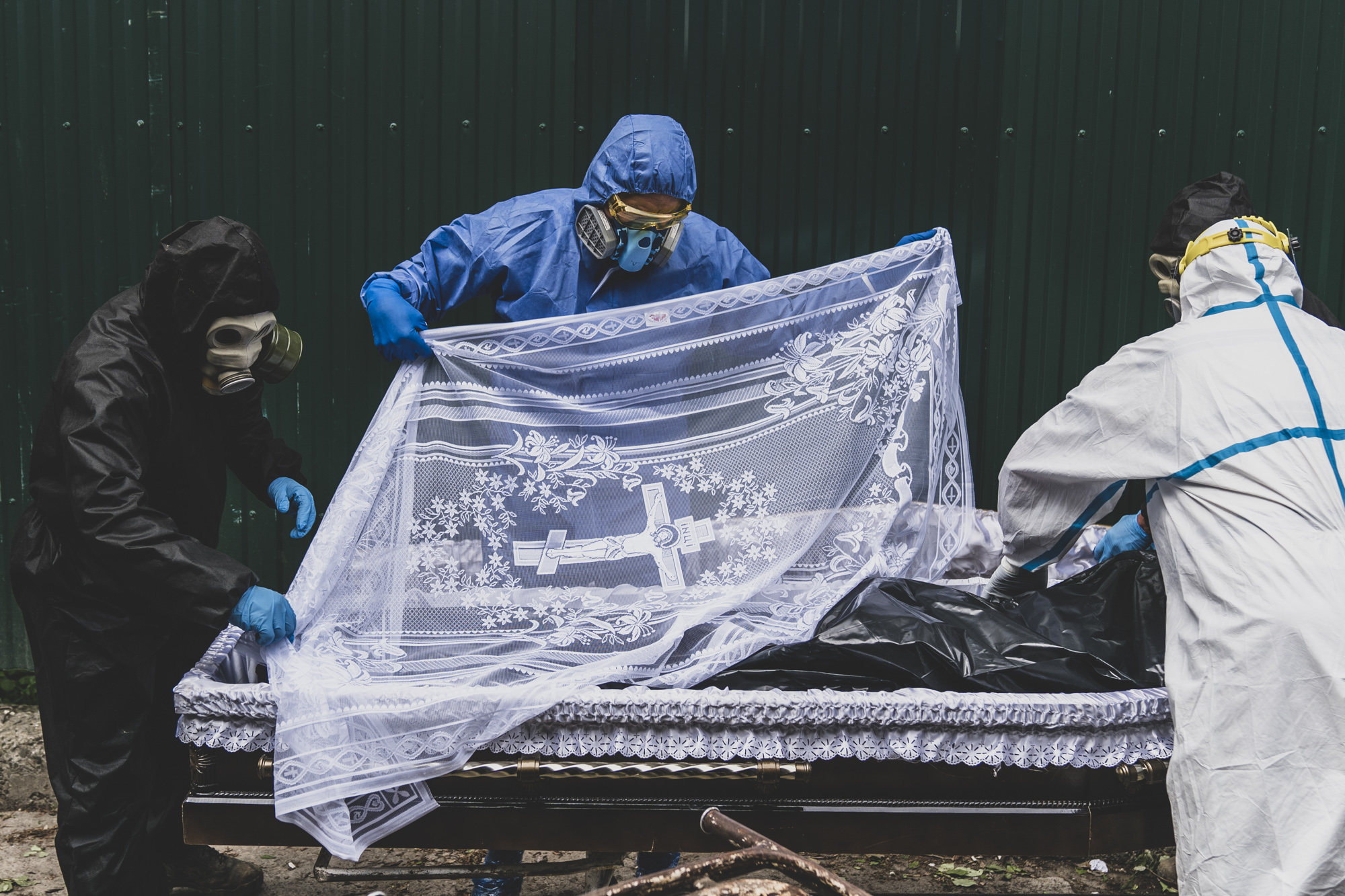
Save and Protect
Yevhen Maloletka is a Ukrainian photographer and videographer collaborating with the Associated Press, Der Spiegel, as well as the UN and the OSCE. He often covers the topic of the war in eastern Ukraine and life in times of conflict. This spring, Yevhen and his colleague, Mstyslav Chernov, a camera man with the Associated Press, spent two weeks shooting the fight against COVID-19 in the most exposed areas of three Ukrainian regions. They are the only ones who covered this topic so holistically—from the ambulance to the funeral. We publish unique, previously unseen shots of their photo trip, which reverberated both abroad and in Ukraine.
“As a reporter, I like working directly in the epicentre of events. Together with my colleague Mstyslav Chernov, I decided to make a big story about the fight against COVID-19 in Ukraine for the Associated Press international agency. Publications about Ukraine in foreign media reach a much wider audience. Moreover, the topic itself is a common global problem. Mstyslav came from Germany via a humanitarian corridor, and we visited the town of Malyn in Zhytomyr region, then Ternopil, Zalishchyky, Pochayiv, and Monastyryska in Ternopil region, and finally Chernivtsi and Storozhynets in Chernivtsi region.
What we saw in Ukrainian hospitals is not a very pleasing picture. Yet, this is the everyday reality in which Ukrainian doctors save our lives. Infectious disease physicians say their salary is UAH 11 higher than the minimum wage. We estimated that a Board-Certified physician makes just over US $2,000 a year. This amount is deeply impressive and depressing.
The first patient to be diagnosed with COVID-19 in Ukraine last February was a resident of Chernivtsi region. Currently, this region has the highest number of confirmed cases after the capital and Kyiv region. Olga Kobevko, an infectious disease physician at the Chernivtsi Regional Clinical Hospital, told us that there were more than a hundred patients per doctor in her ward. She compares the pandemic situation with the first days of the war, because they likewise have no idea “what to expect and when they would be bombed again.”
In Pochayiv, which is home for some 8,000 residents, the Holy Dormition Lavra became the primary site of the coronavirus. At the time of shooting, the local hospital was taking care of 44 COVID-19 patients. The hospital itself is very old—it was built at the beginning of the last century. There is outdated equipment, no ventilation and oxygen supply systems, and there is still stove heating. Yet, the hospital is colourful—with curtains on the windows and icons hanging everywhere.
In Ternopil, we shot a forensic pathologist performing an autopsy on a body in a plastic bag just outside the hospital, because their morgue is not adapted for autopsy of those who died of infectious diseases. There is no special ventilation system and a separate, “infectious” drainage. (After our report, the issue was allegedly partially solved—they were relocated to a different morgue, which is only a slight improvement, but equipped with a separate sewer, and in addition—a hundred protective suits for fifty autopsies usually performed by two.) During a pandemic, even dissecting those killed in traffic accidents, pathologists and forensic experts risk getting infected because the deceased could have been infected. Many forensic pathologists fell ill, and one died in Chernivtsi.
It was perfectly clear for us that we were taking risks, as well. We tried to protect ourselves as much as possible with suits and masks, each time disinfecting both our bodies and the cameras. Sometimes we would get a headache or start coughing, and we would think: “That’s it, we got sick”. But I guess we managed to get away with it… With this report we sought to evoke strong emotions and draw attention to the issues in the Ukrainian medical system, because it is important for the society to see the reality and not to slur over the problems.”
[This publication was created with support of the Royal Norwegian Embassy in Ukraine. The views and opinions expressed in this publication are those of the authors and do not necessarily reflect the official position of the Norwegian government.]
Have read to the end! What's next?
Next is a small request.
Building media in Ukraine is not an easy task. It requires special experience, knowledge and special resources. Literary reportage is also one of the most expensive genres of journalism. That's why we need your support.
We have no investors or "friendly politicians" - we’ve always been independent. The only dependence we would like to have is dependence on educated and caring readers. We invite you to support us on Patreon, so we could create more valuable things with your help.
Reports130
More